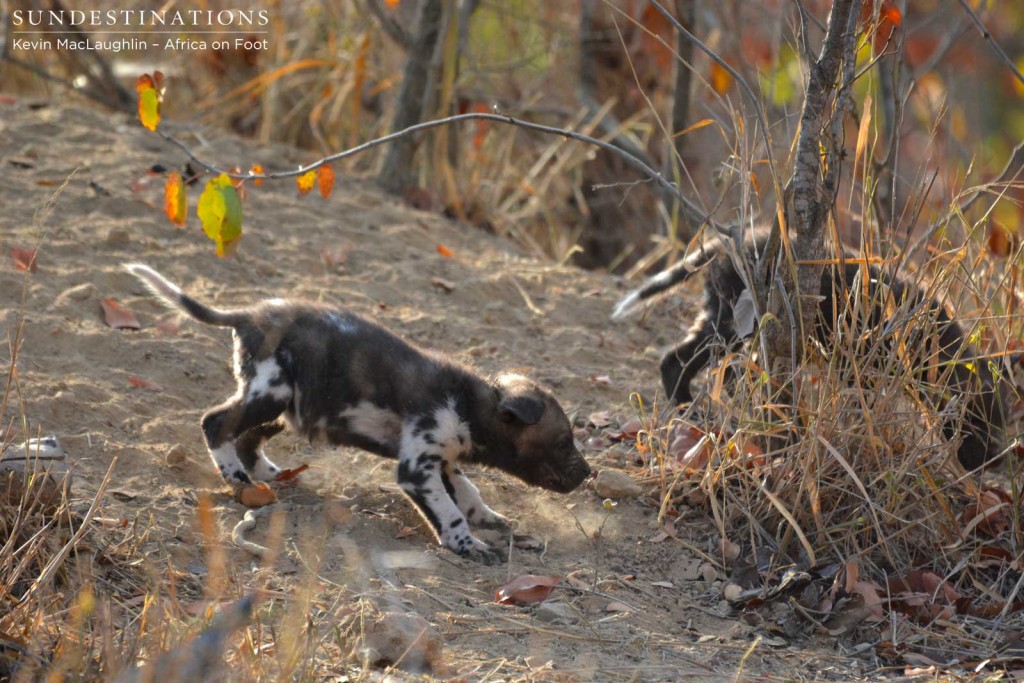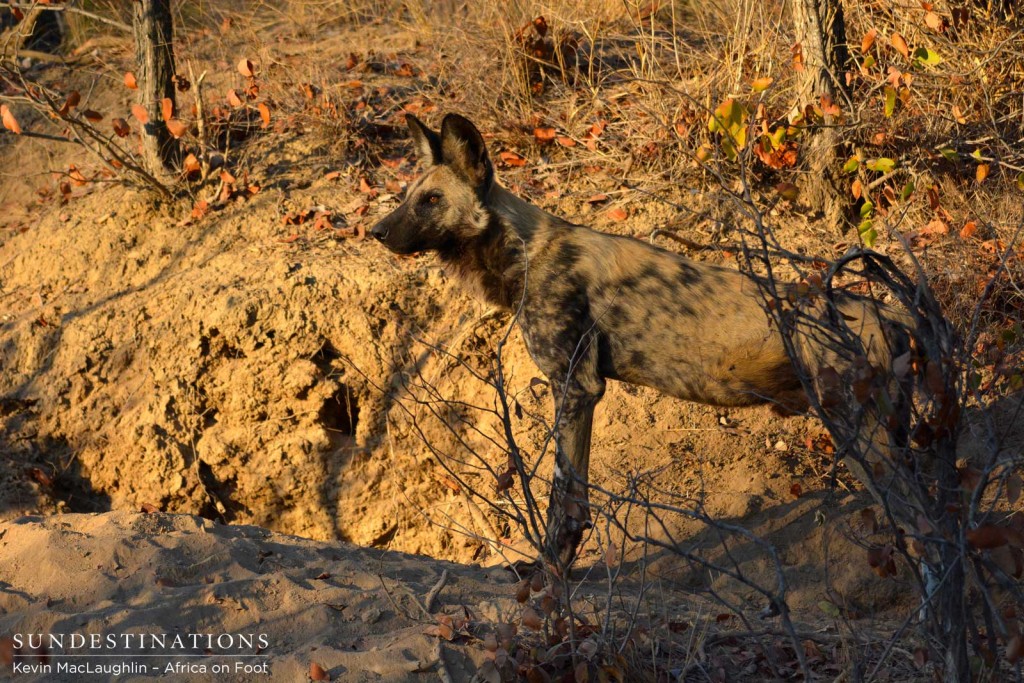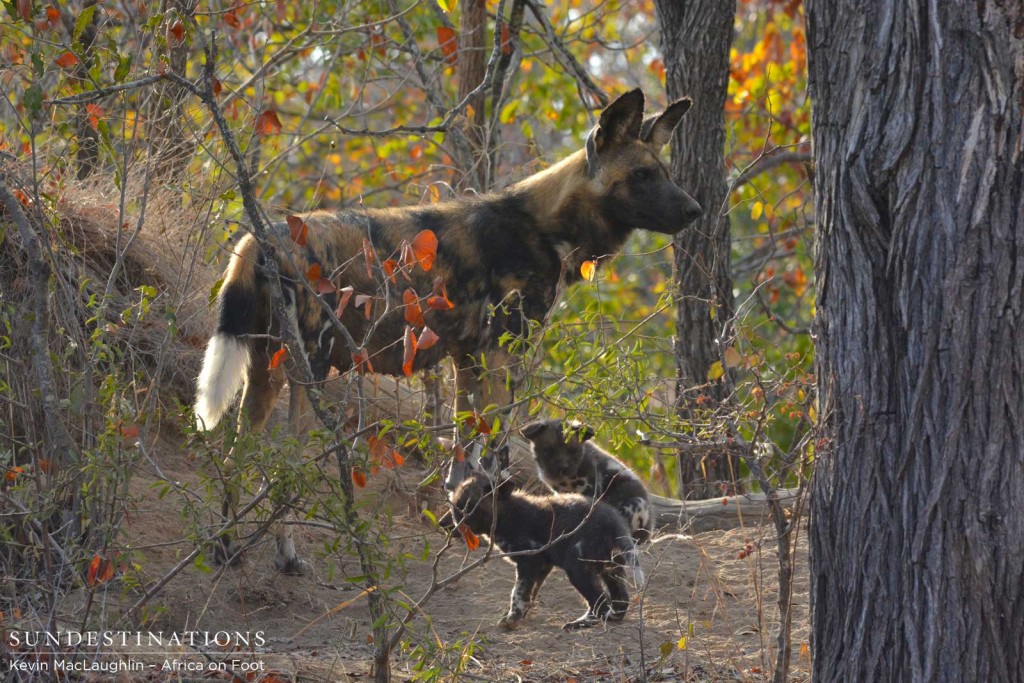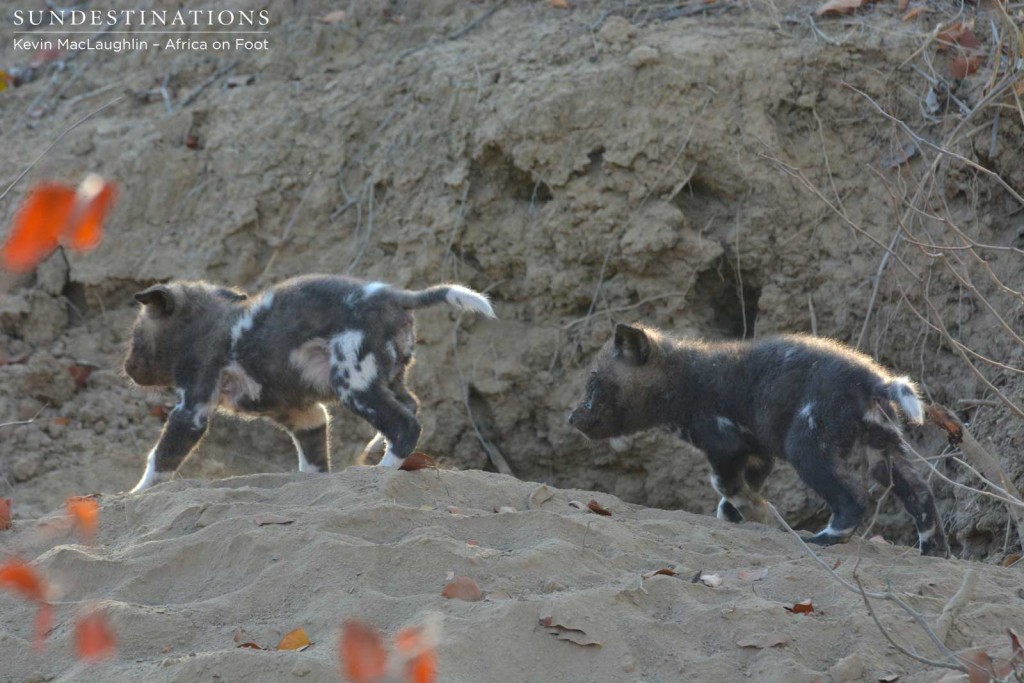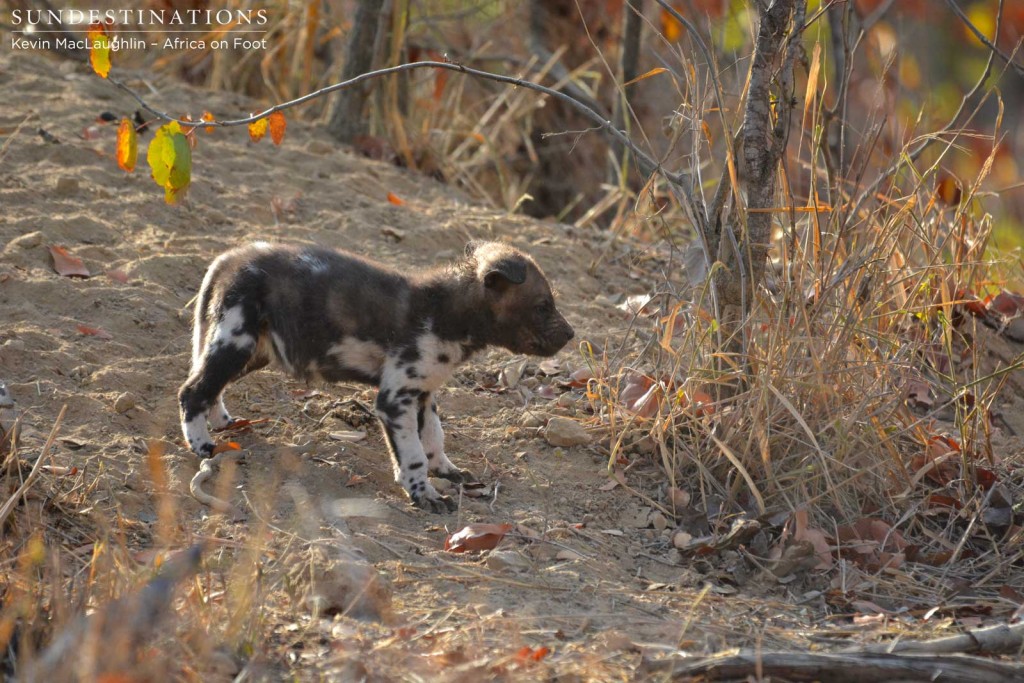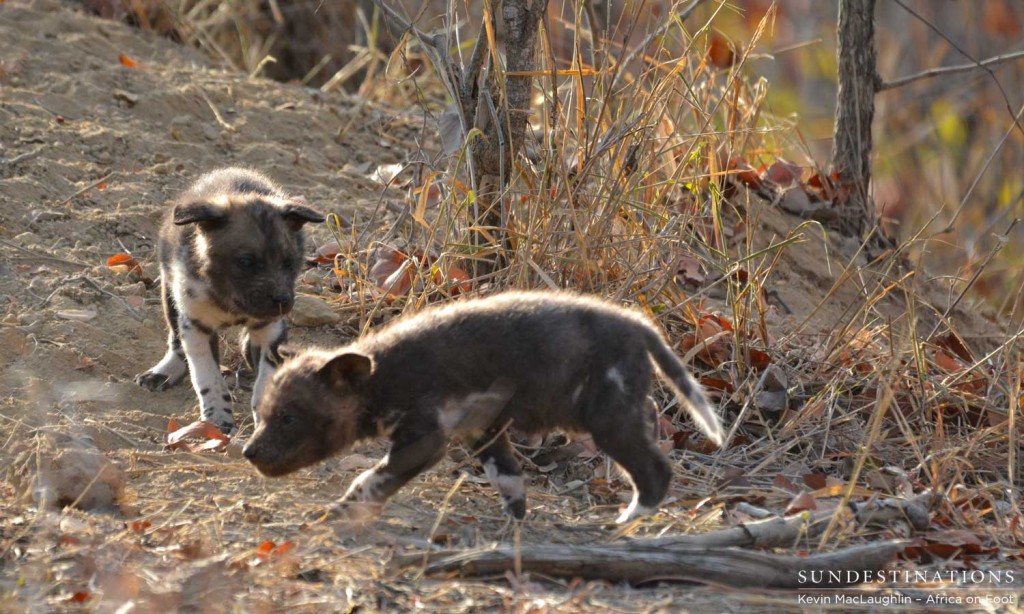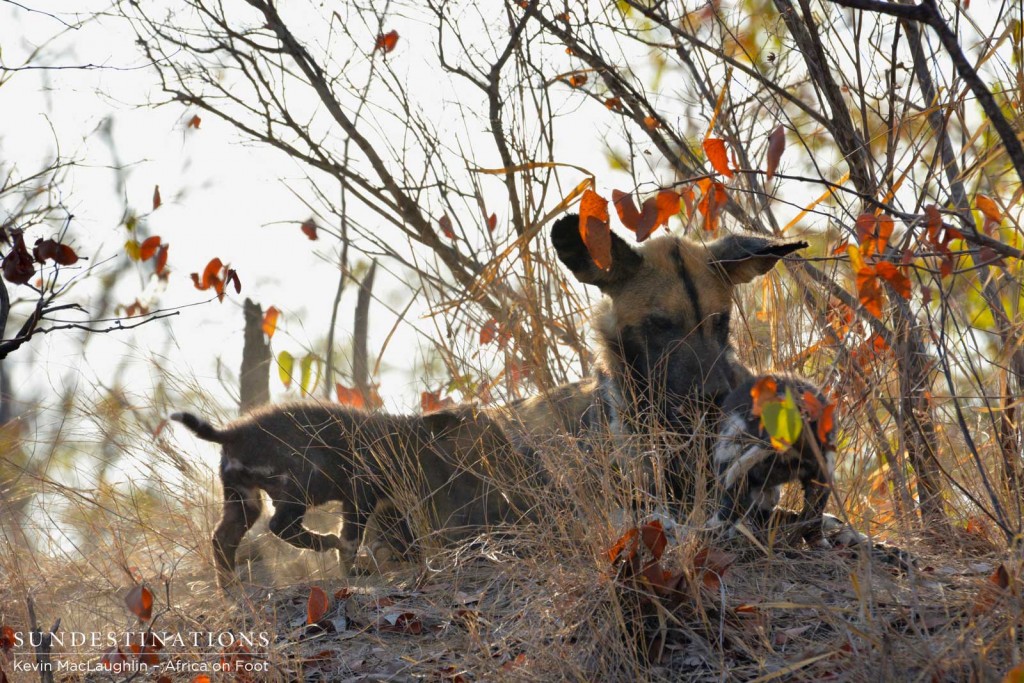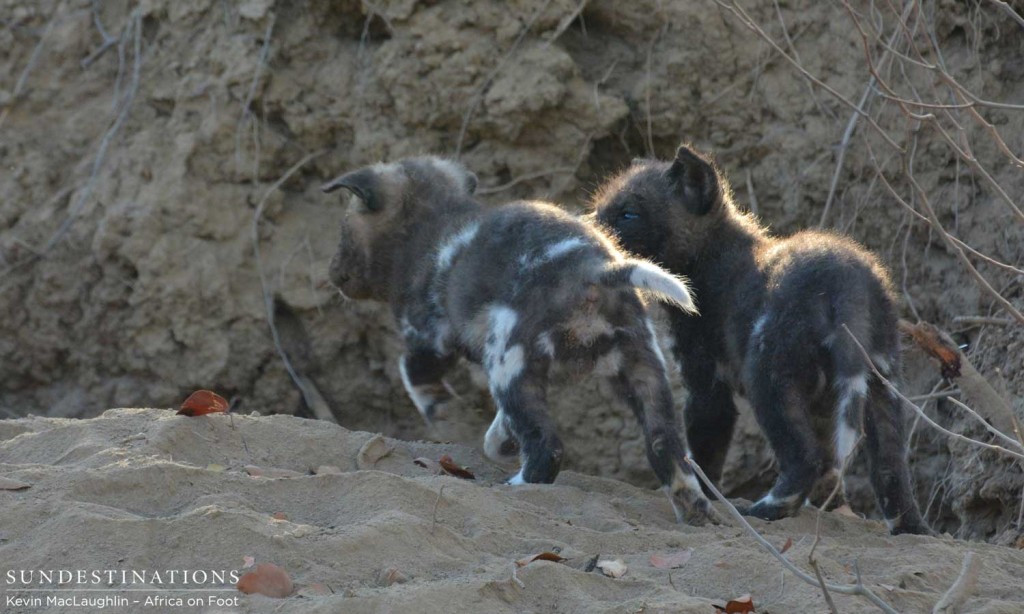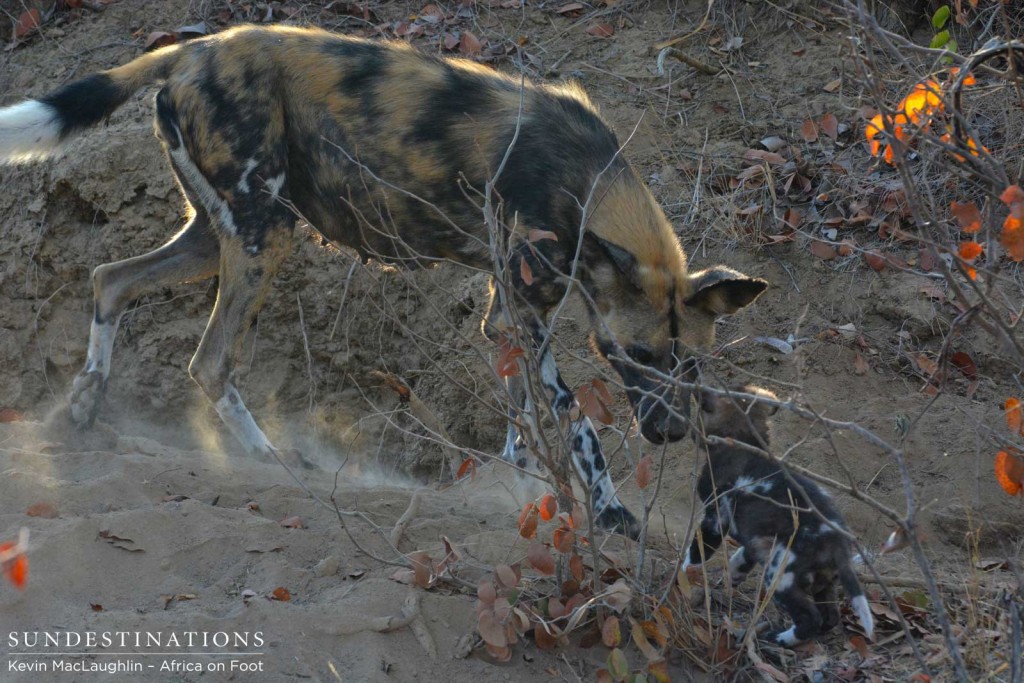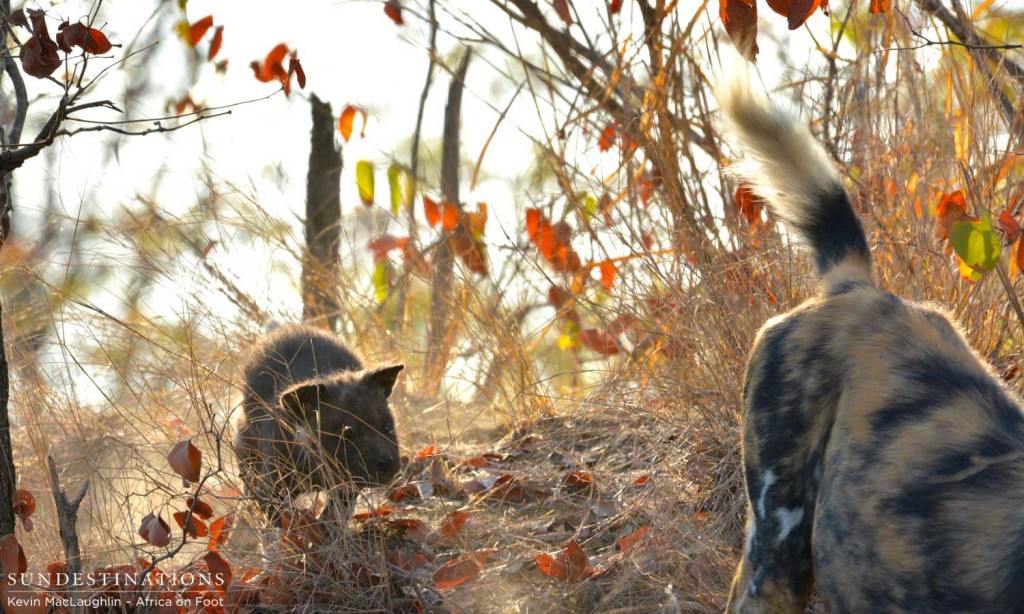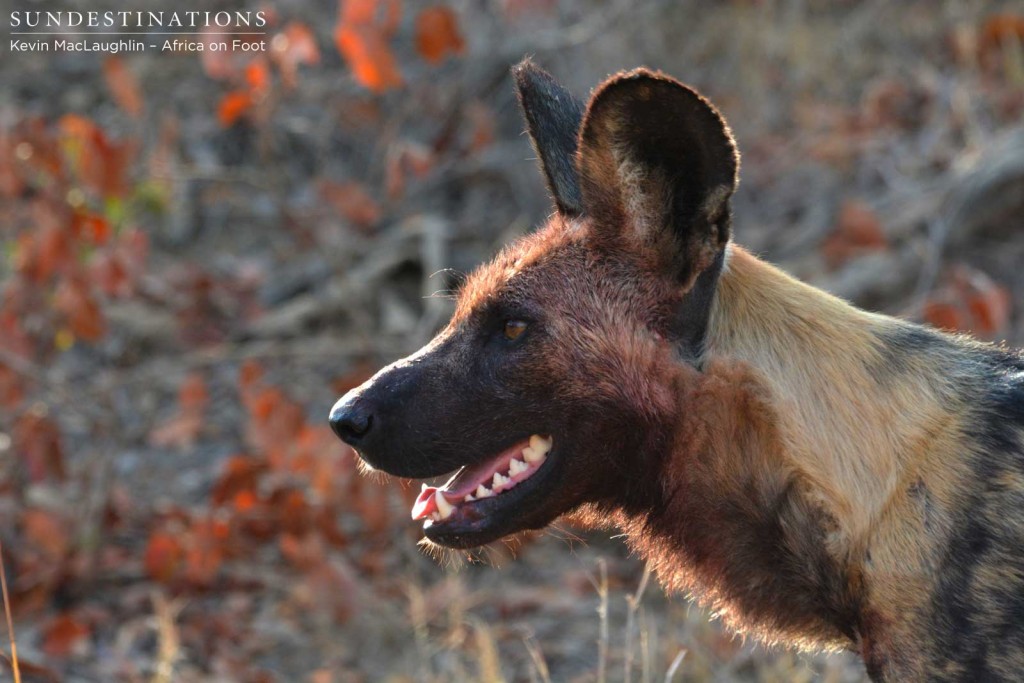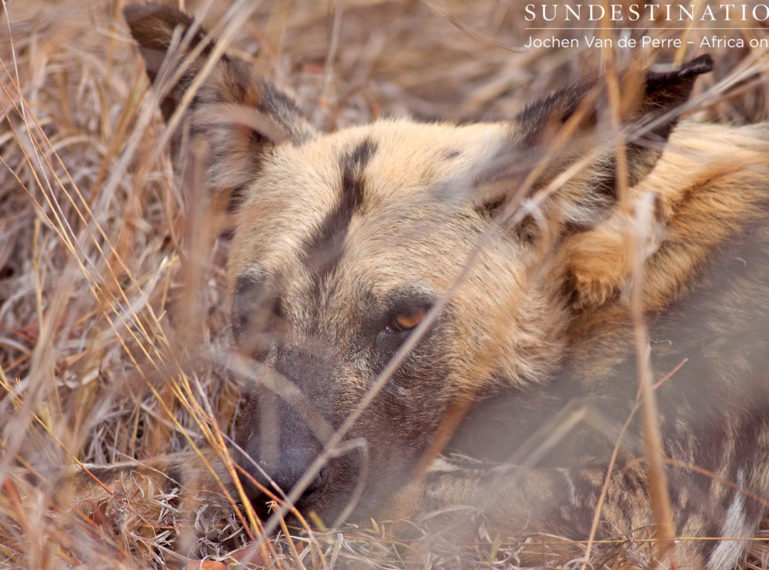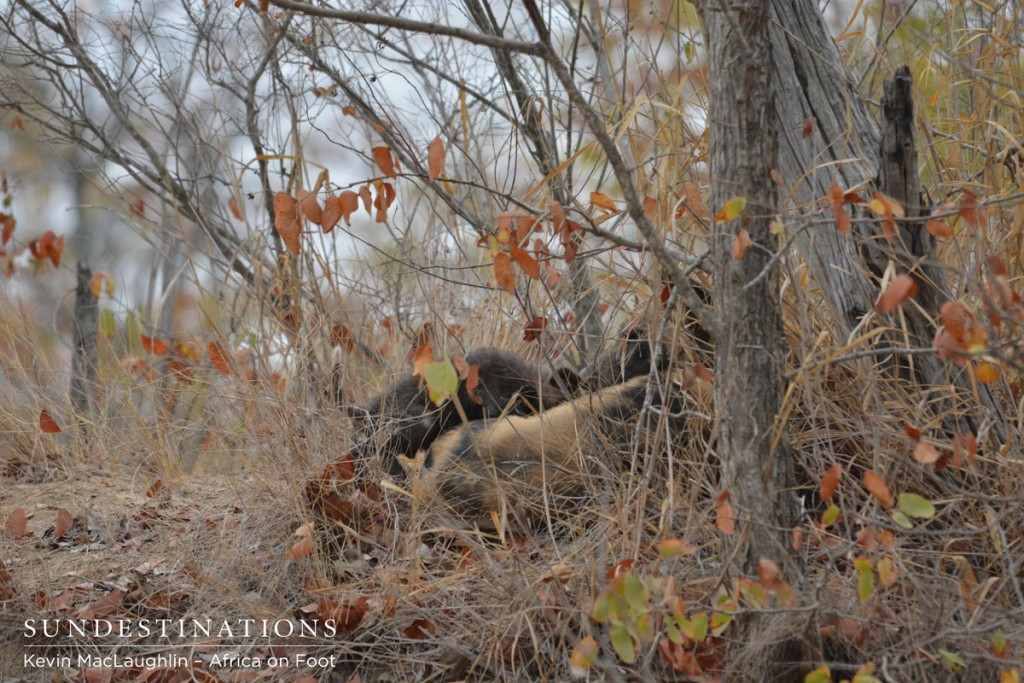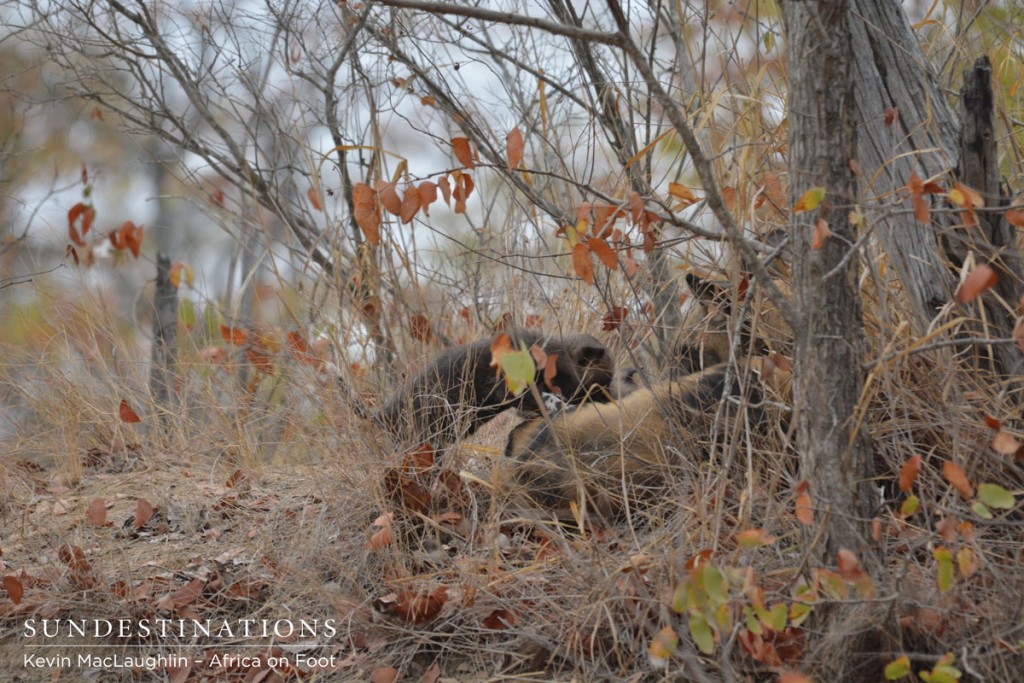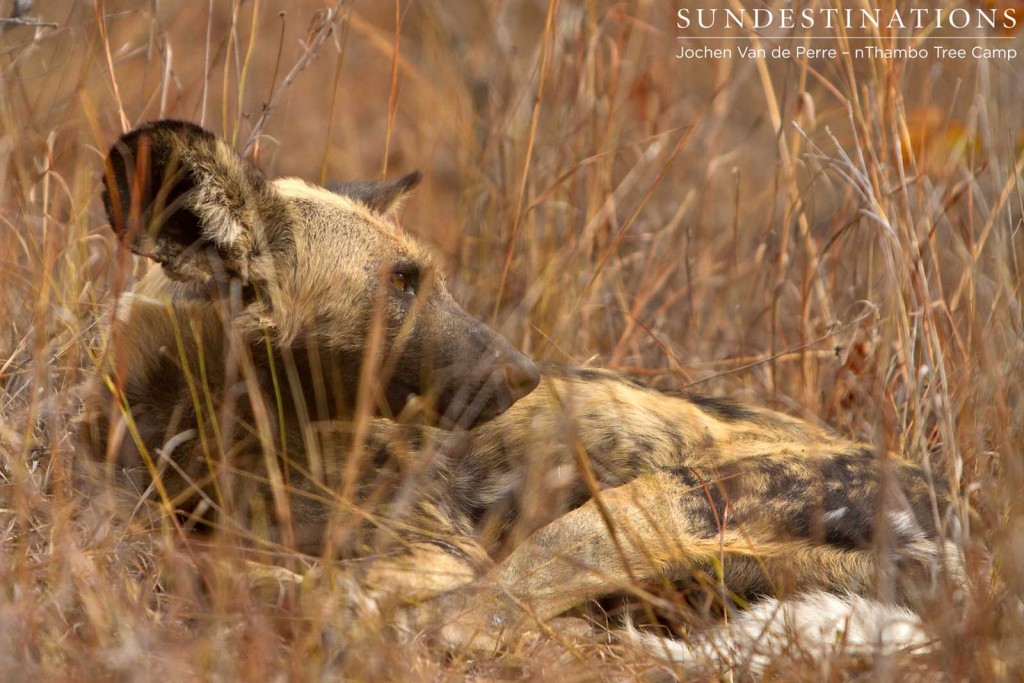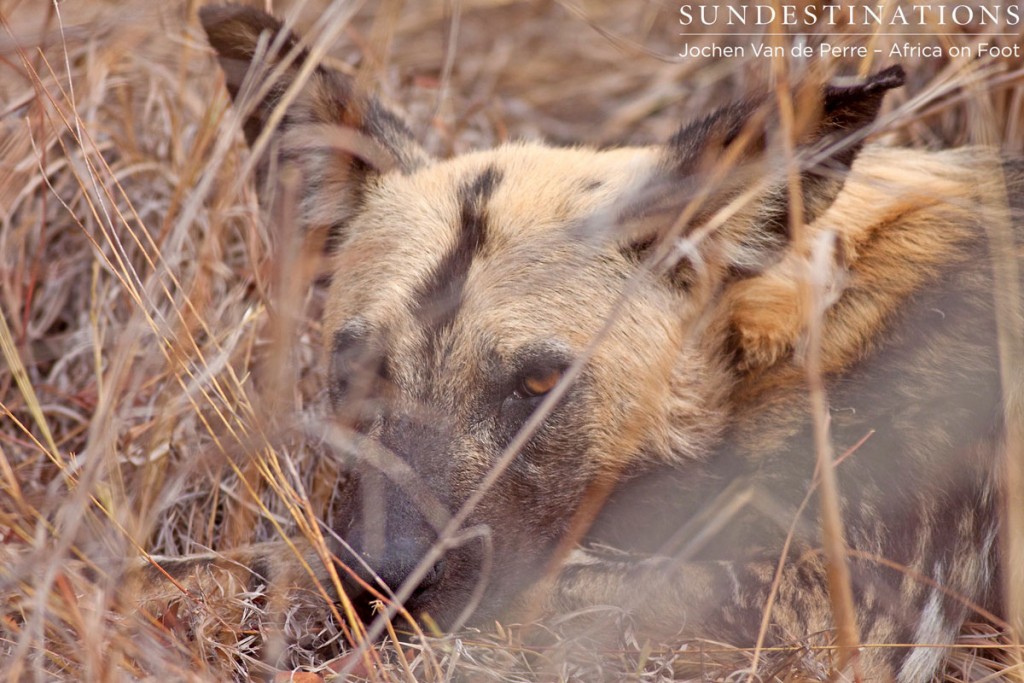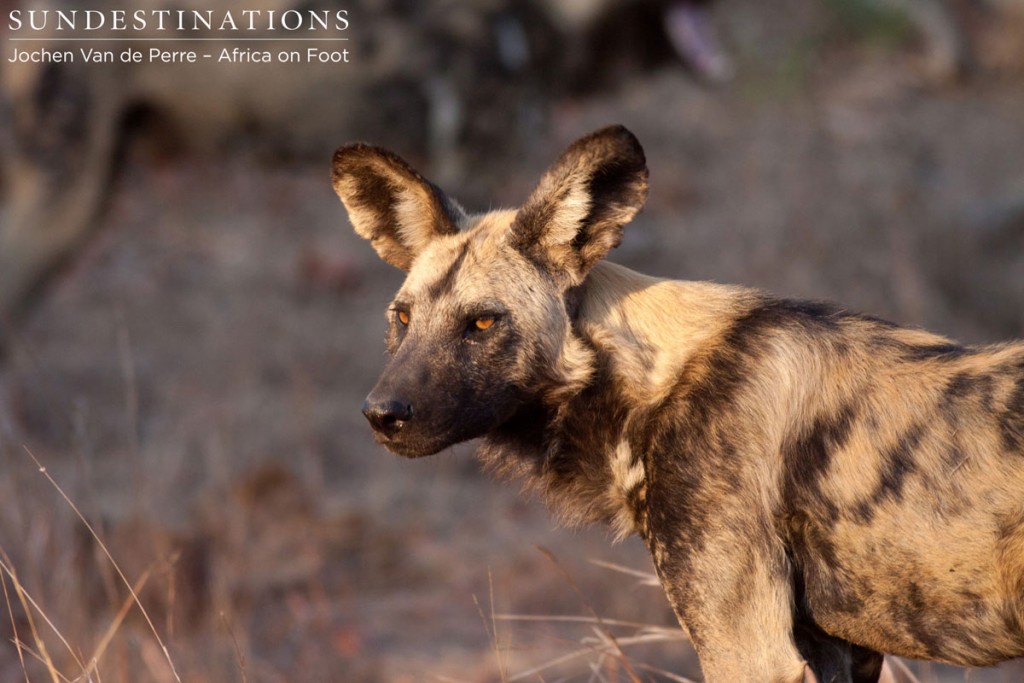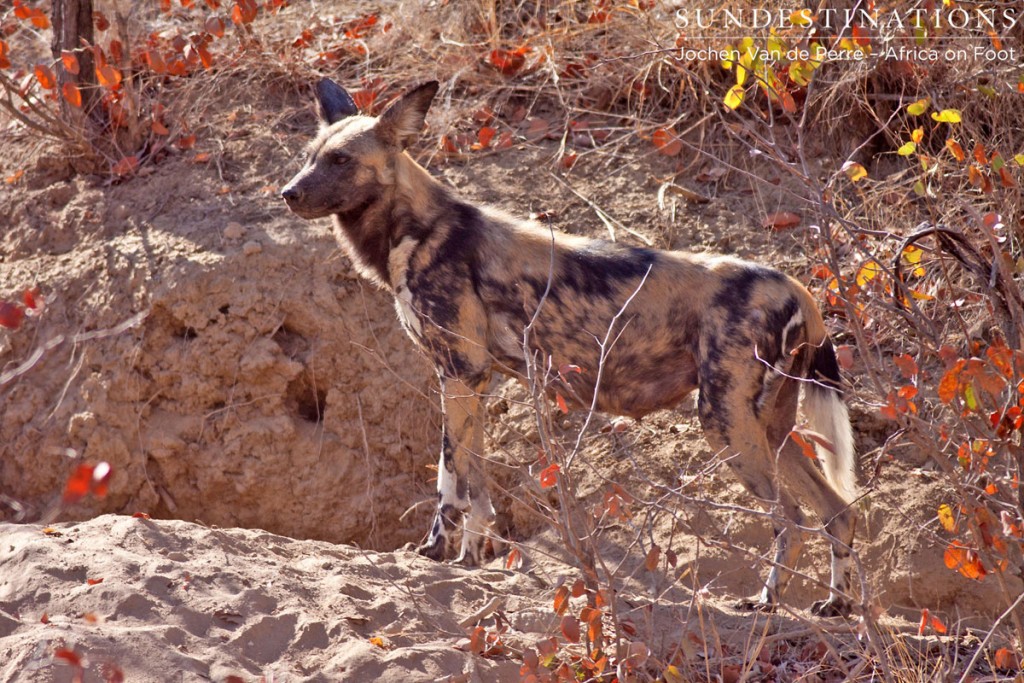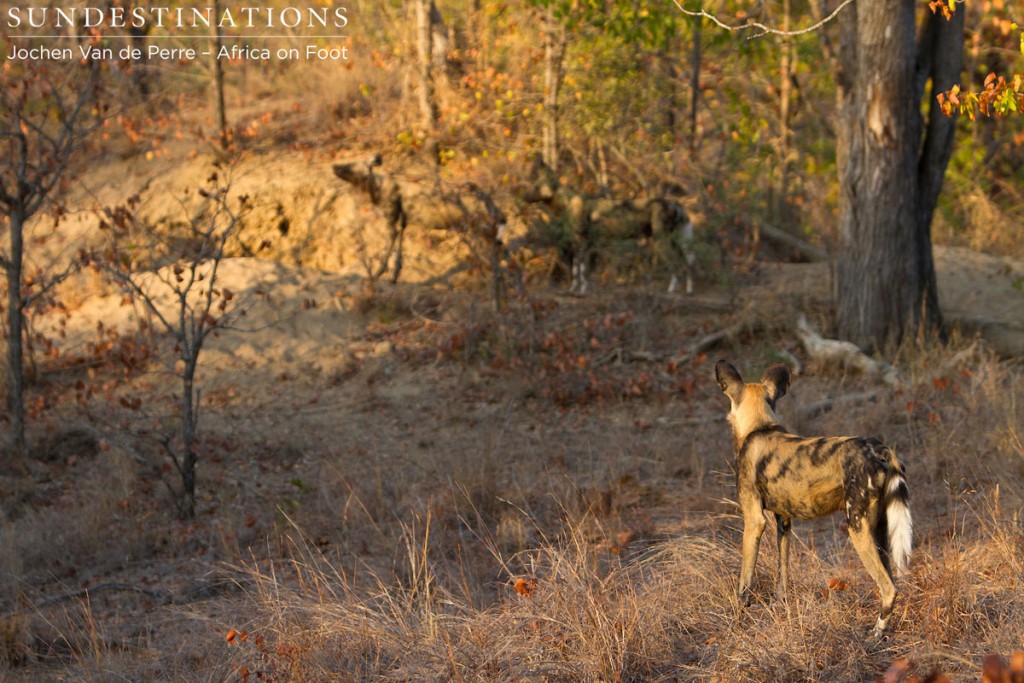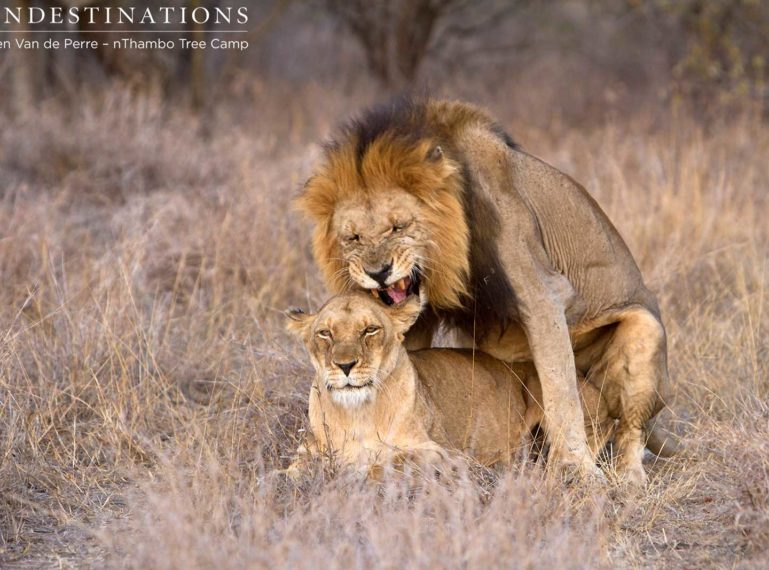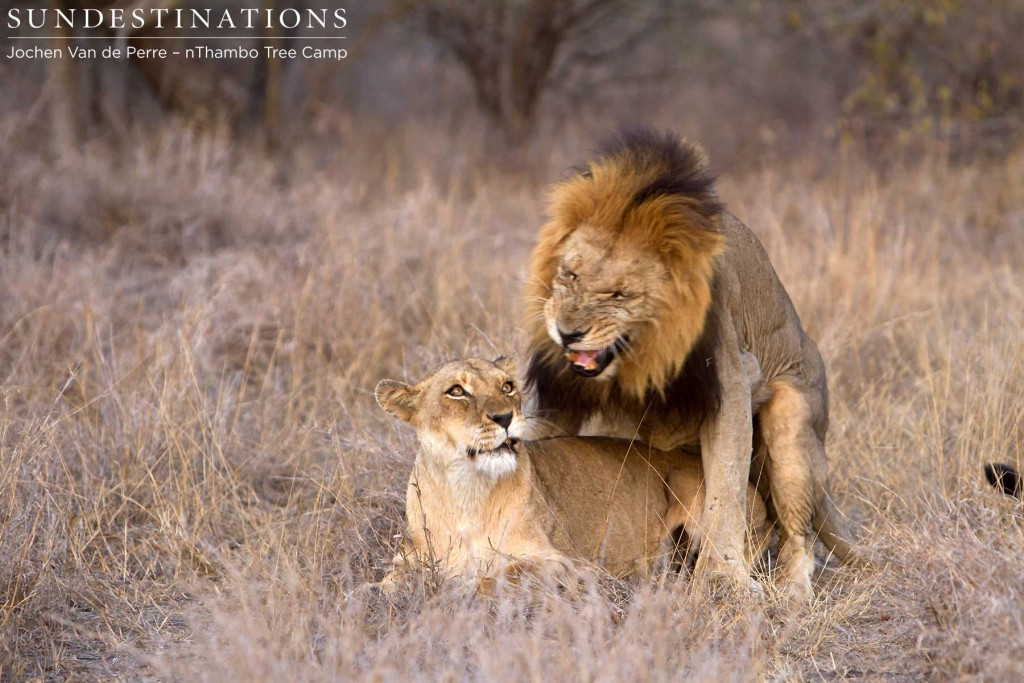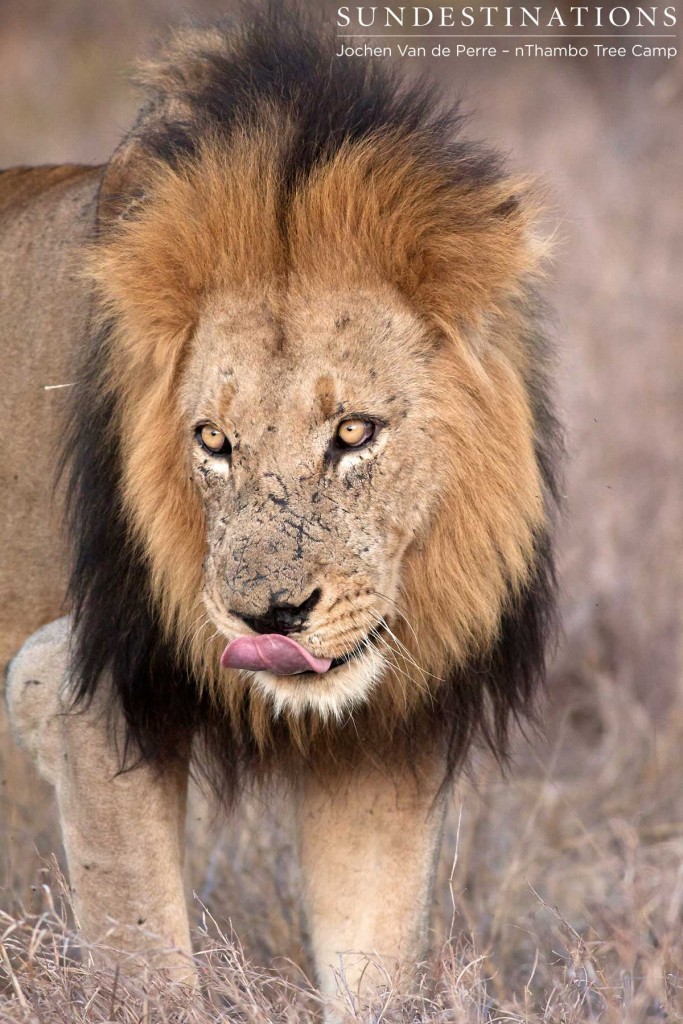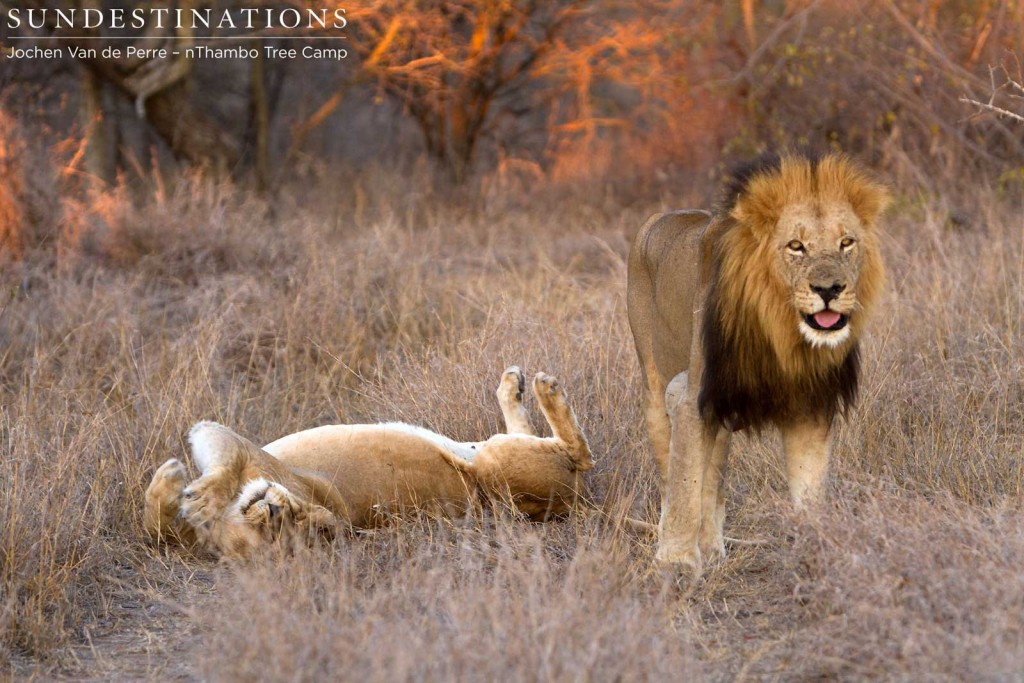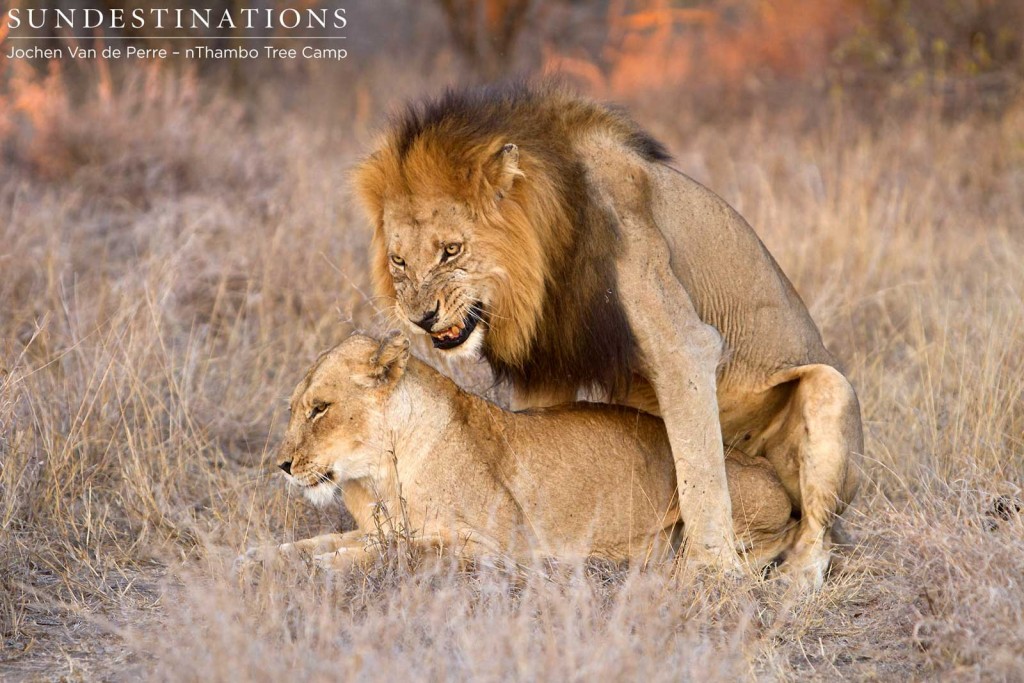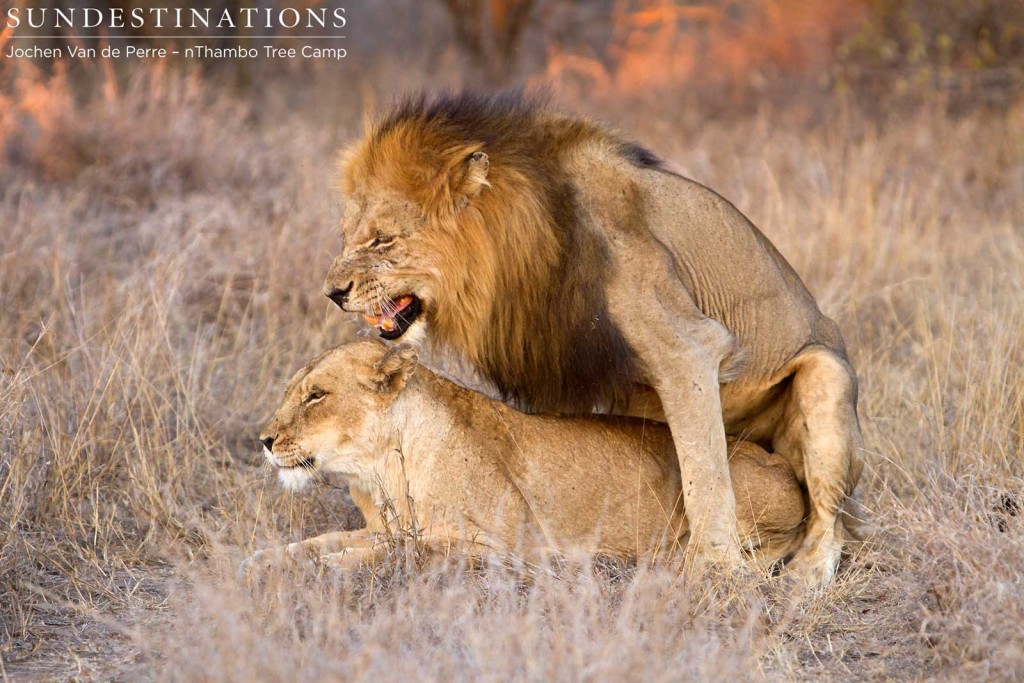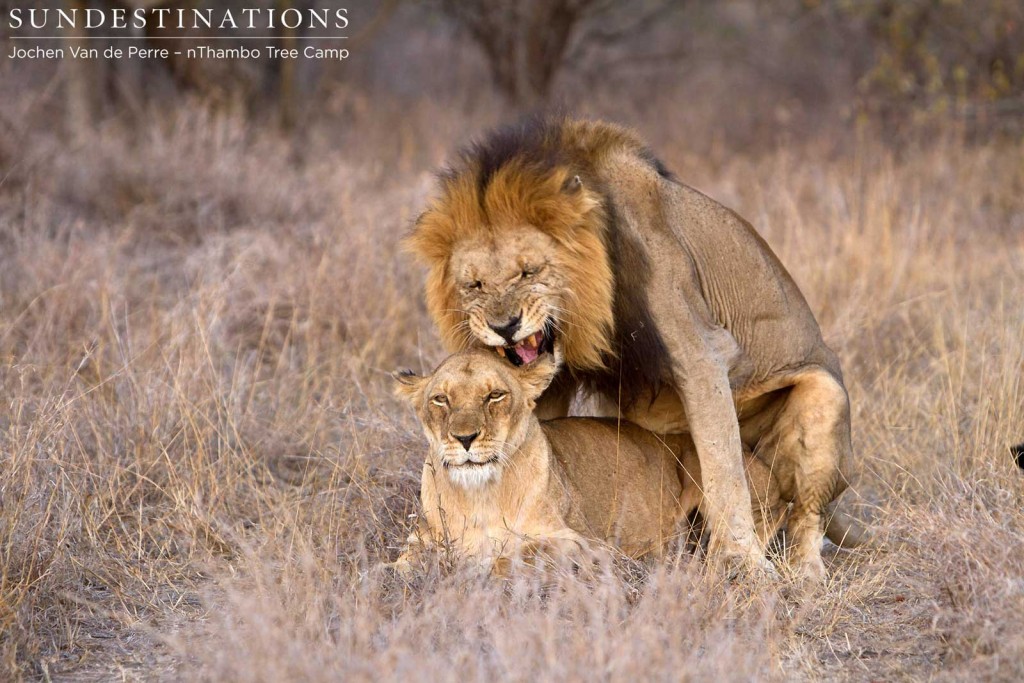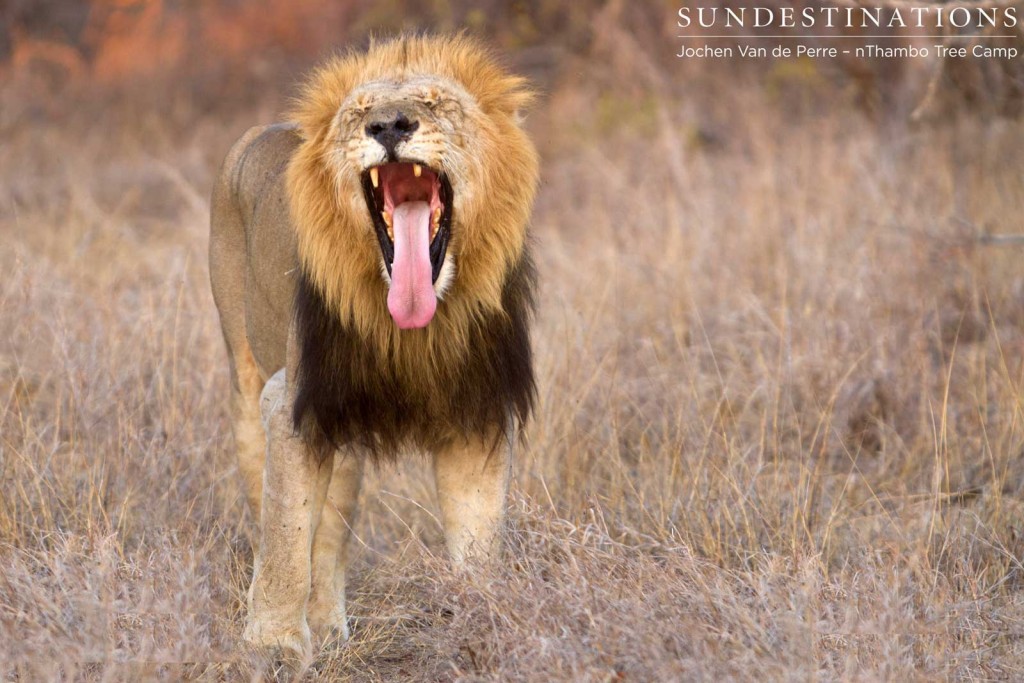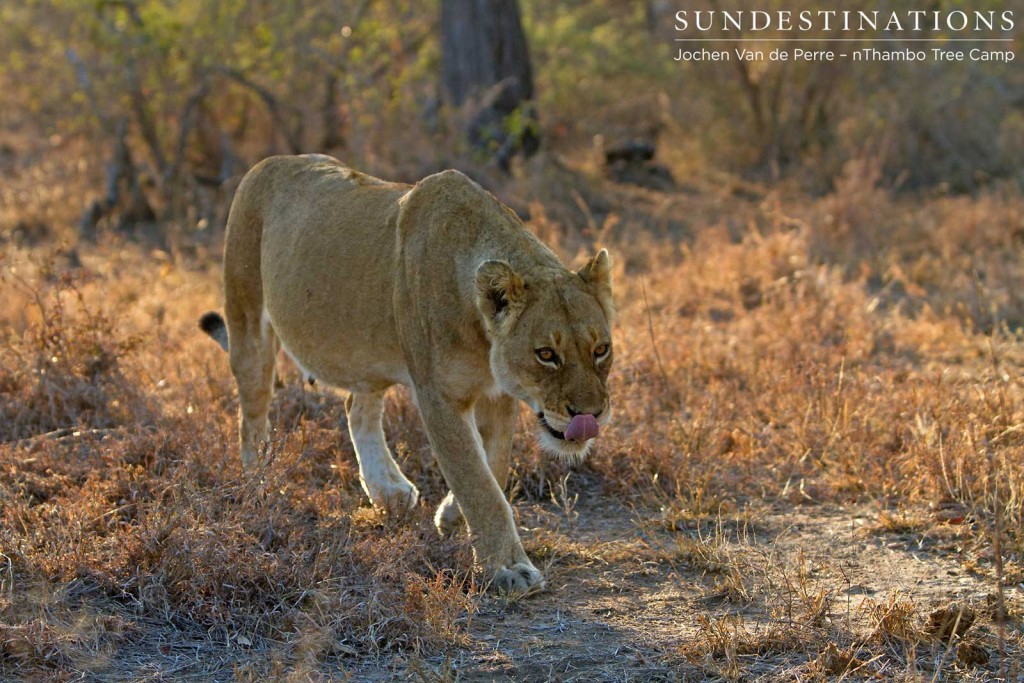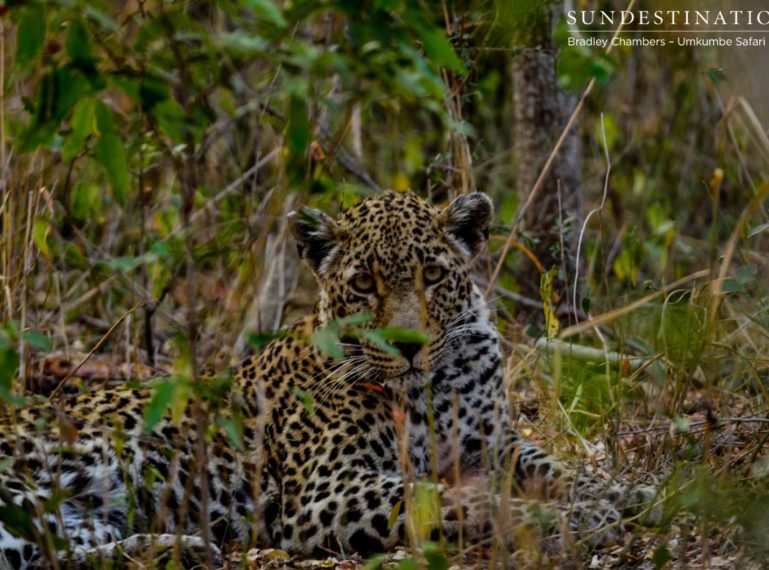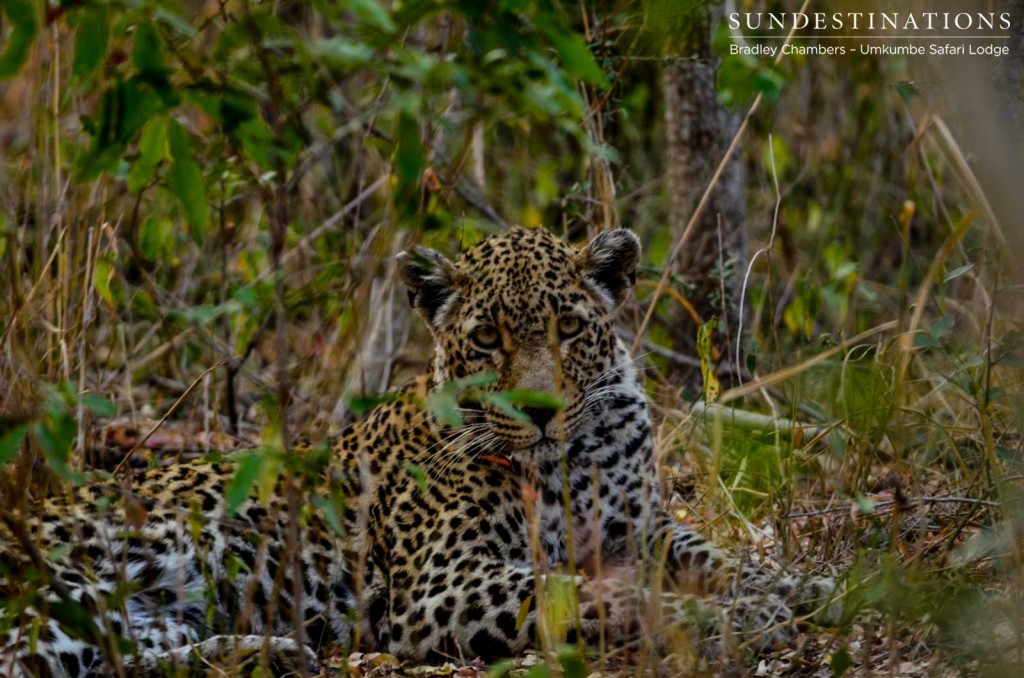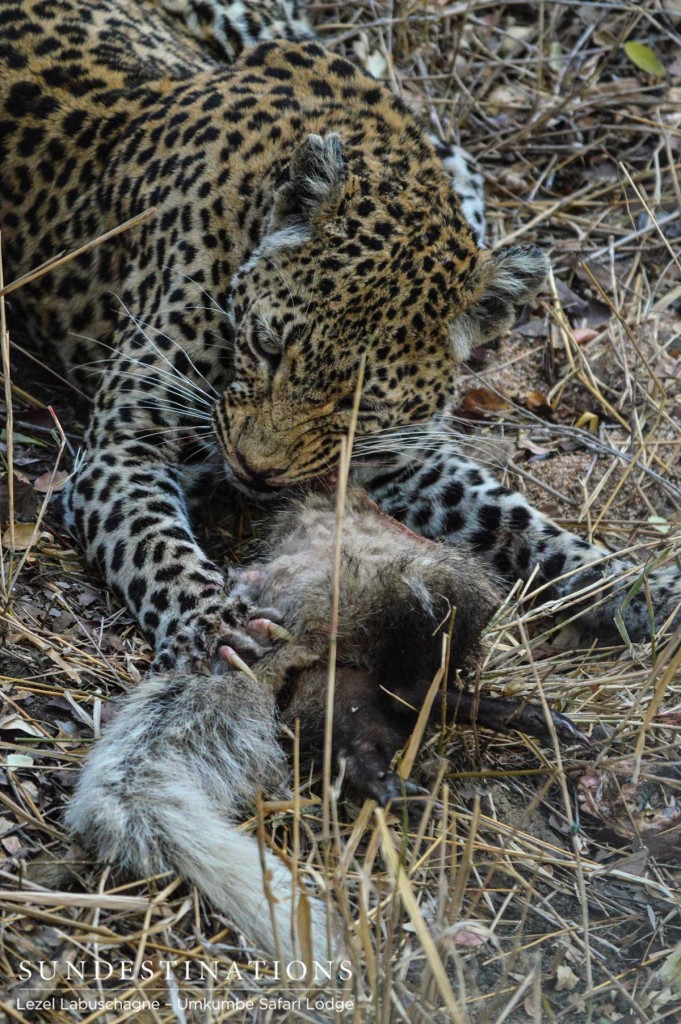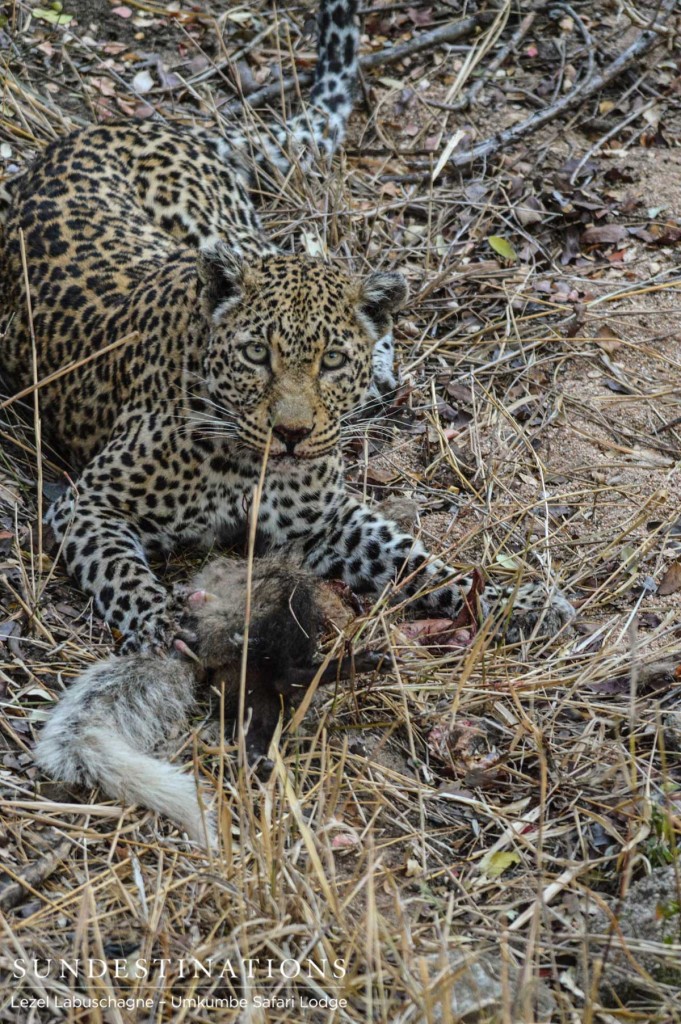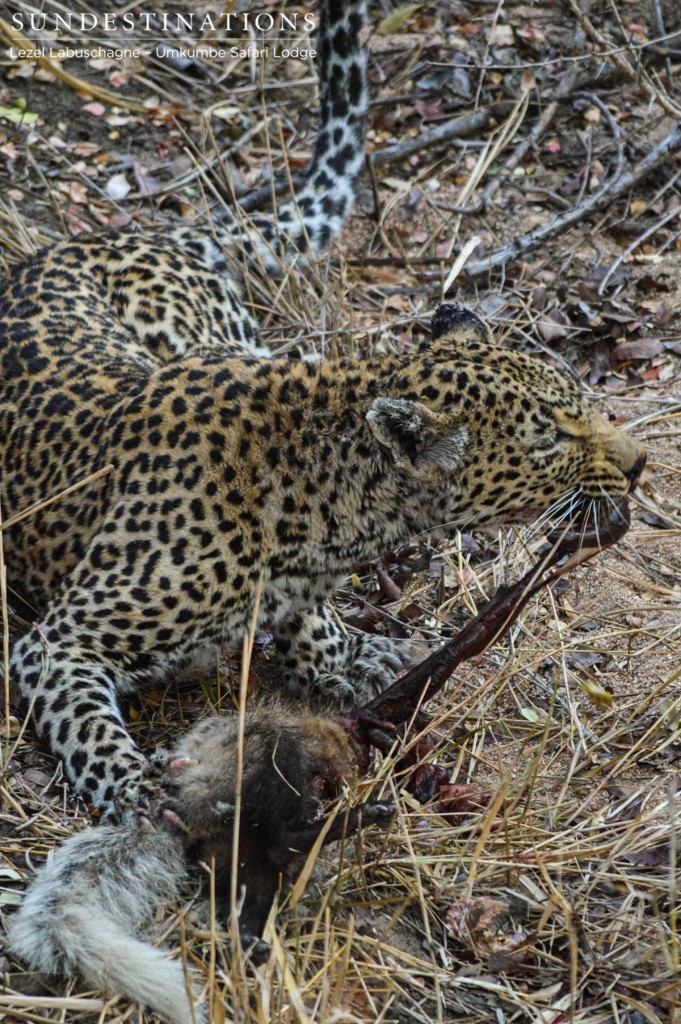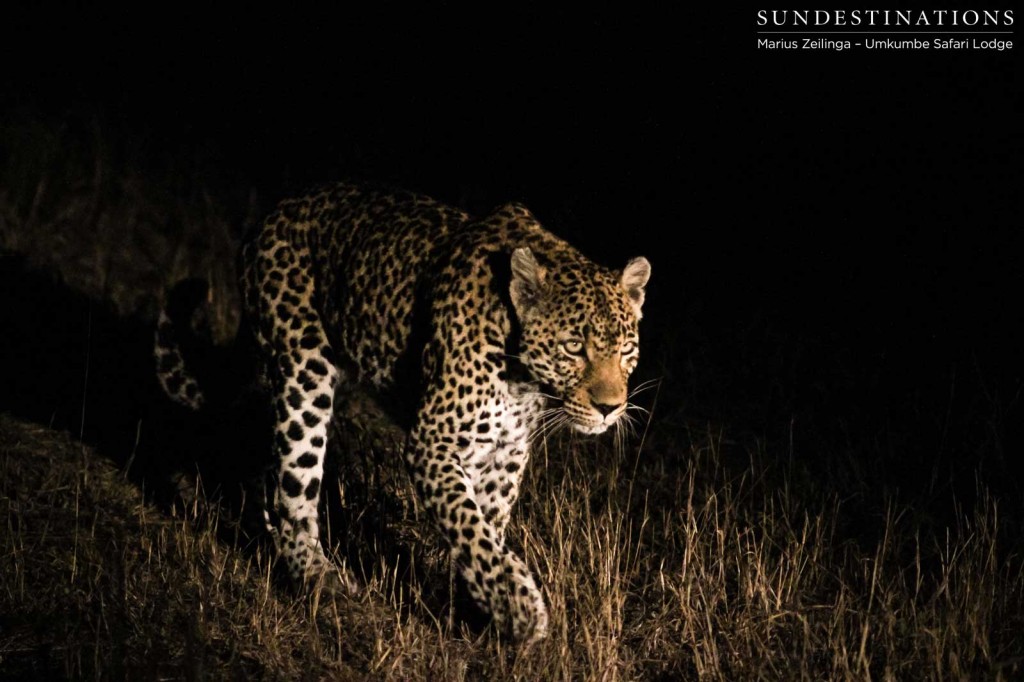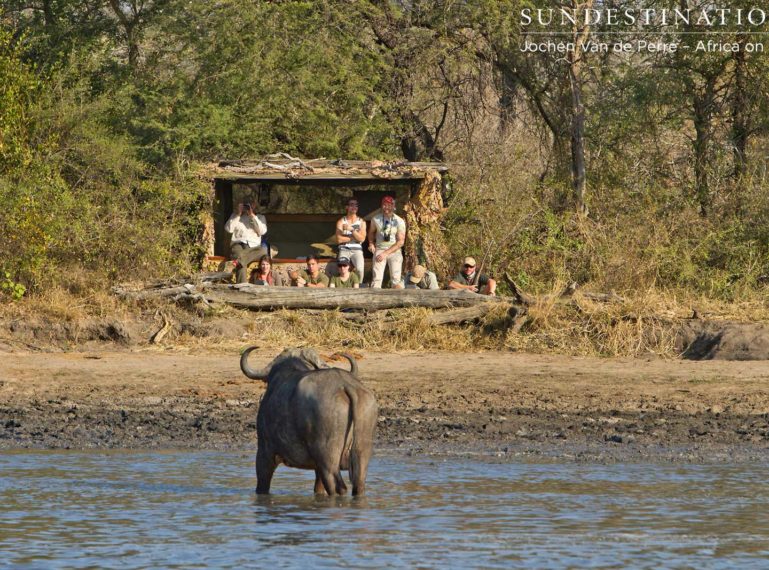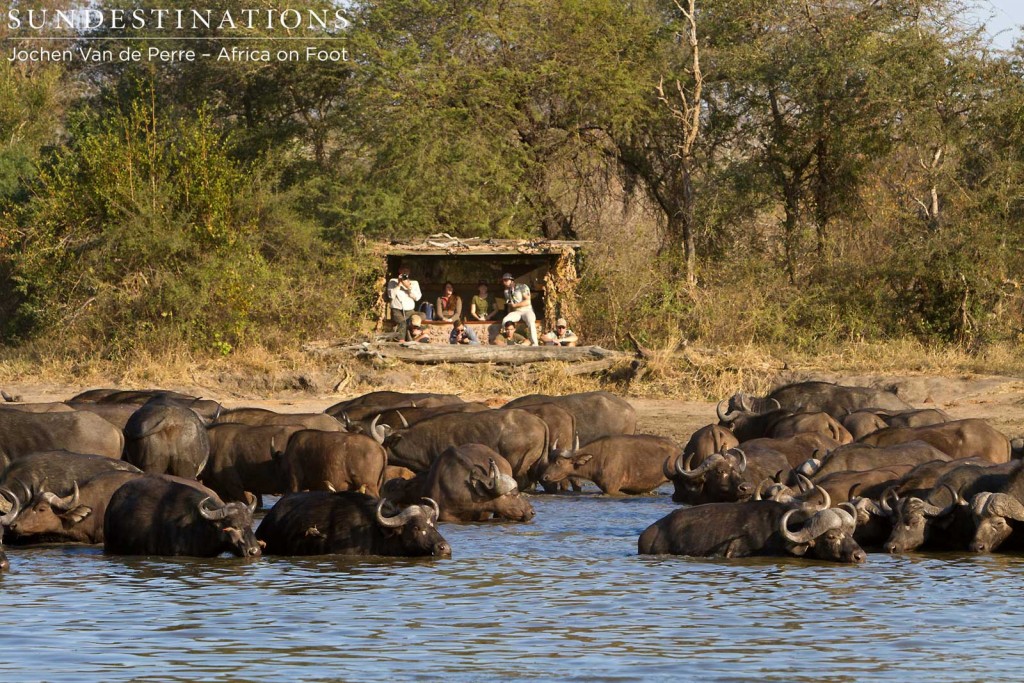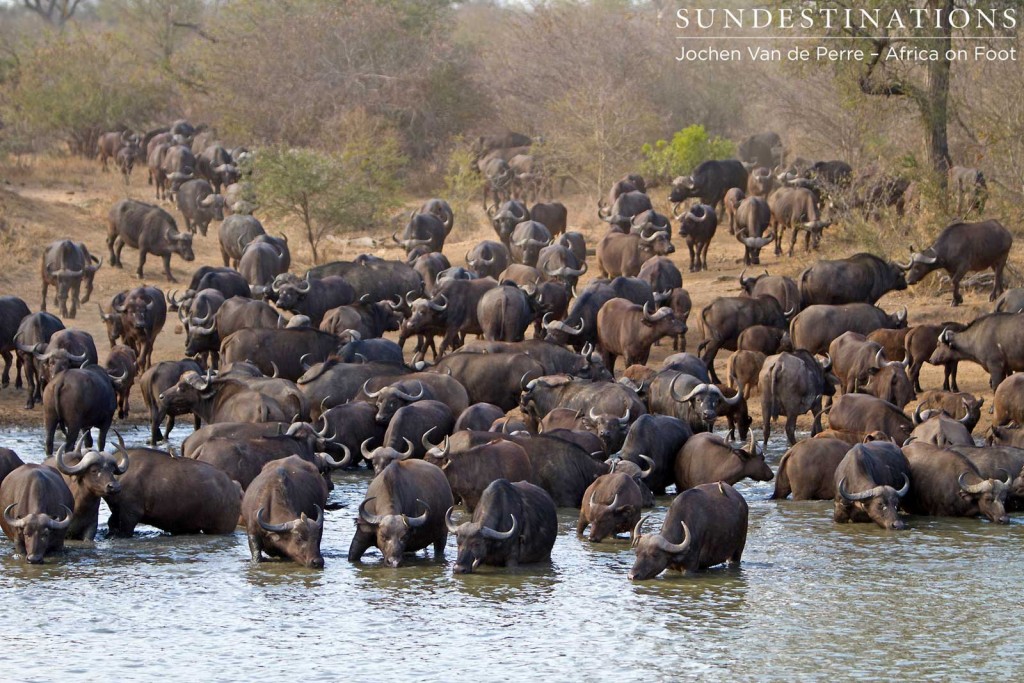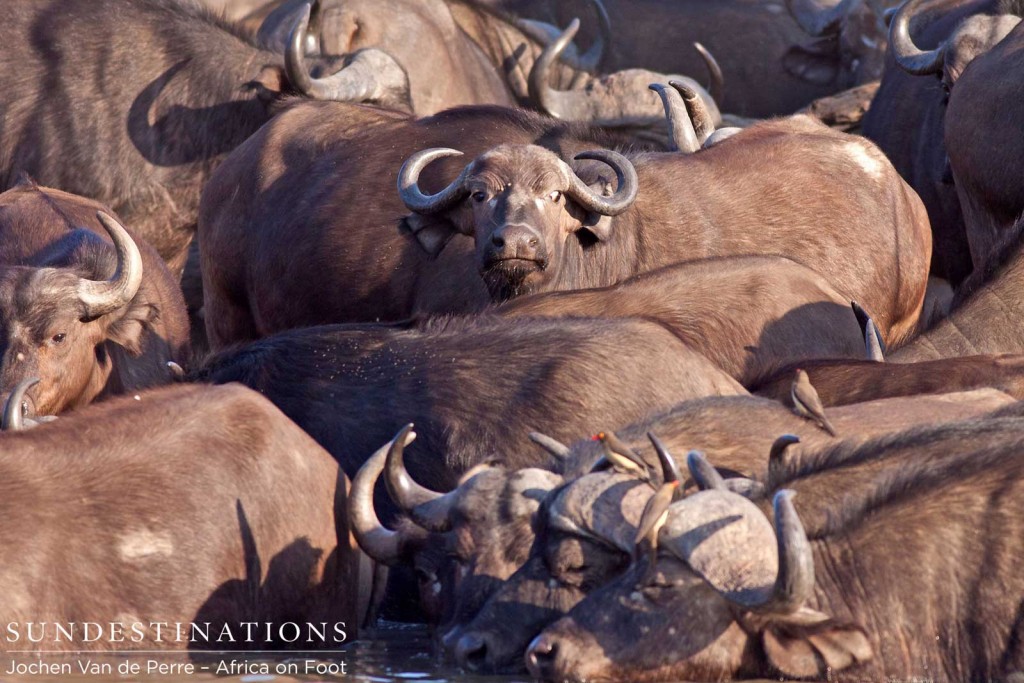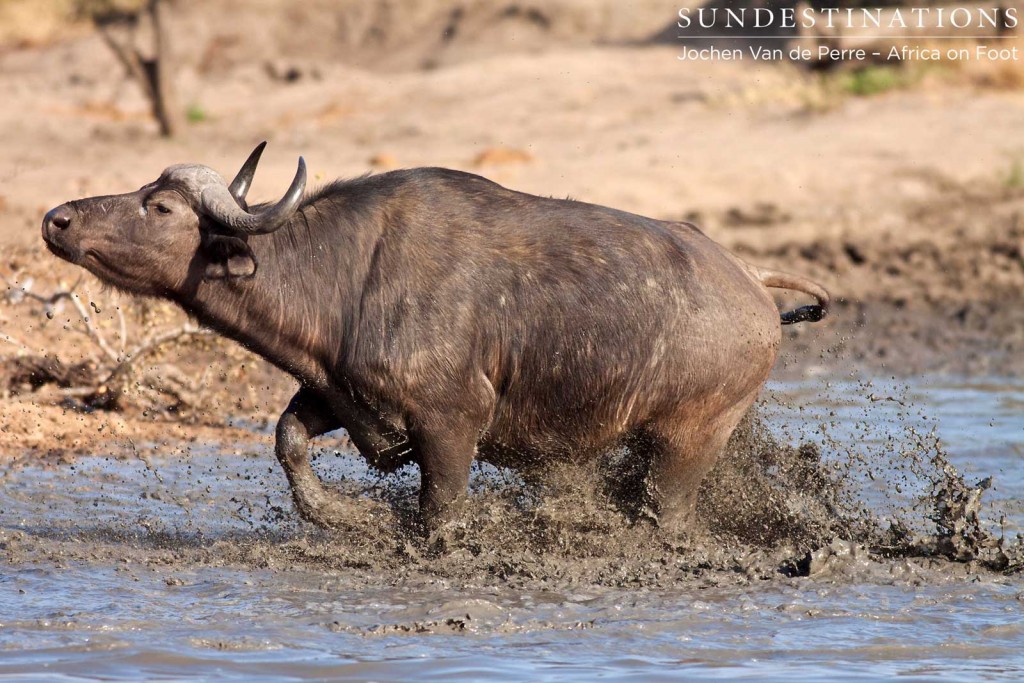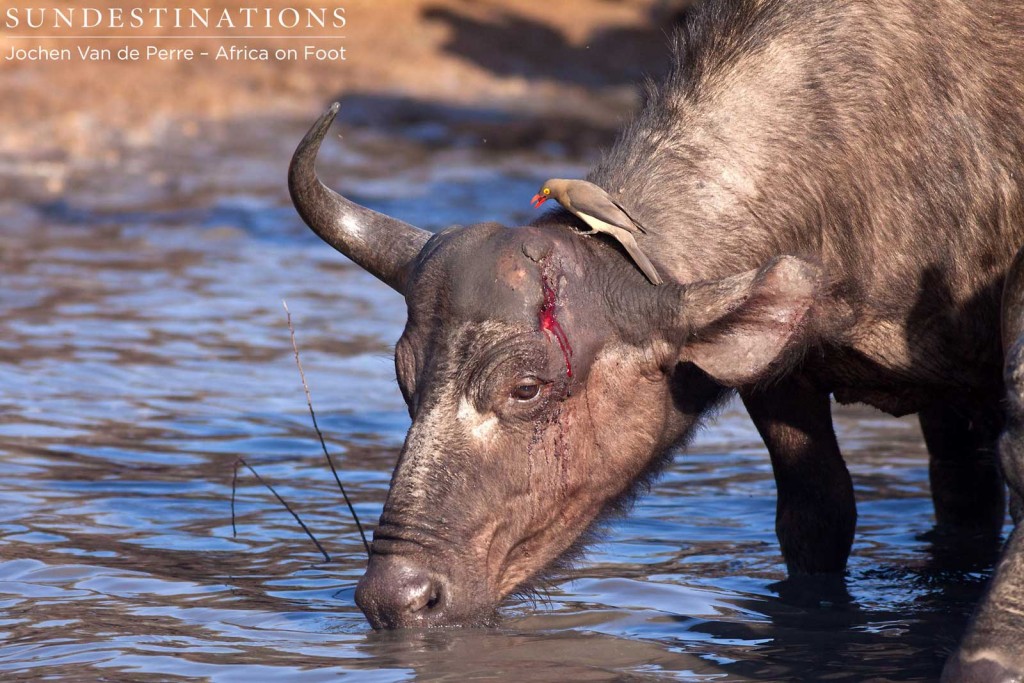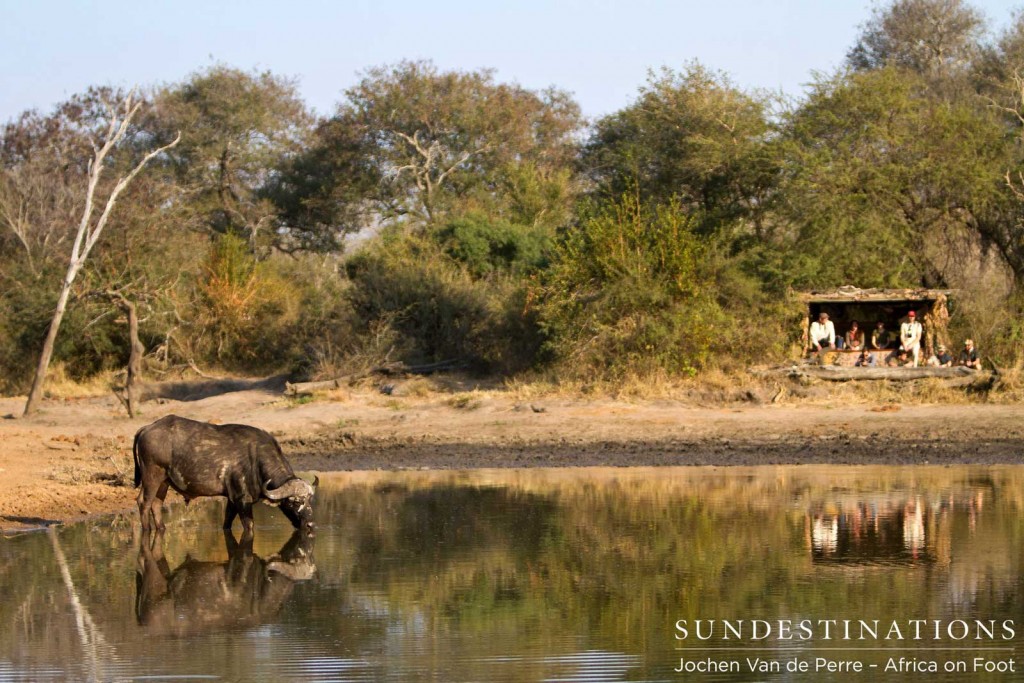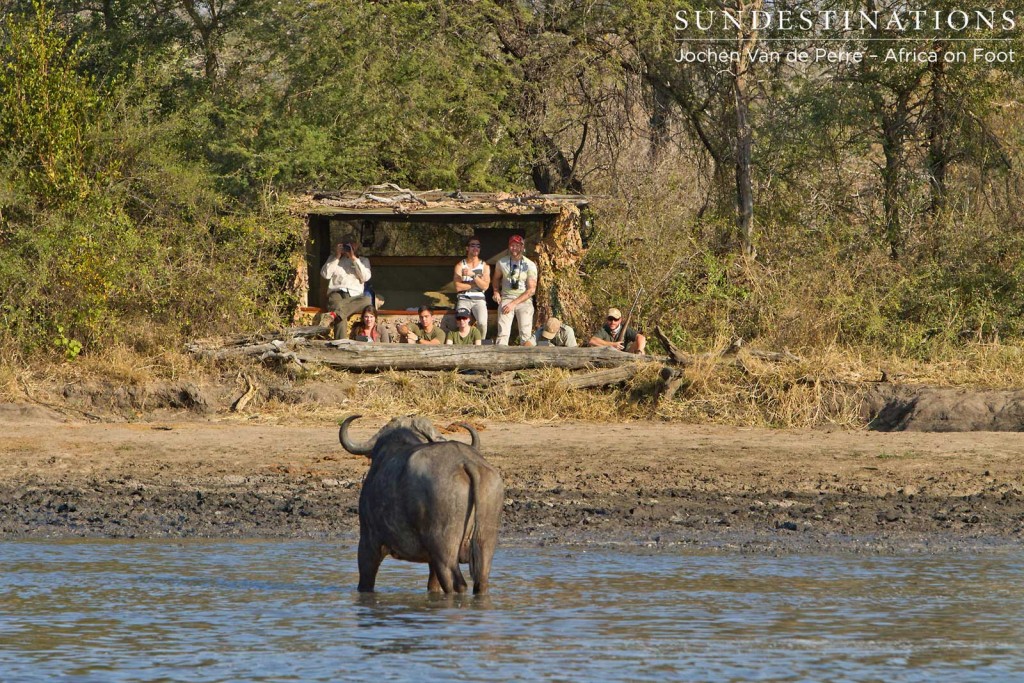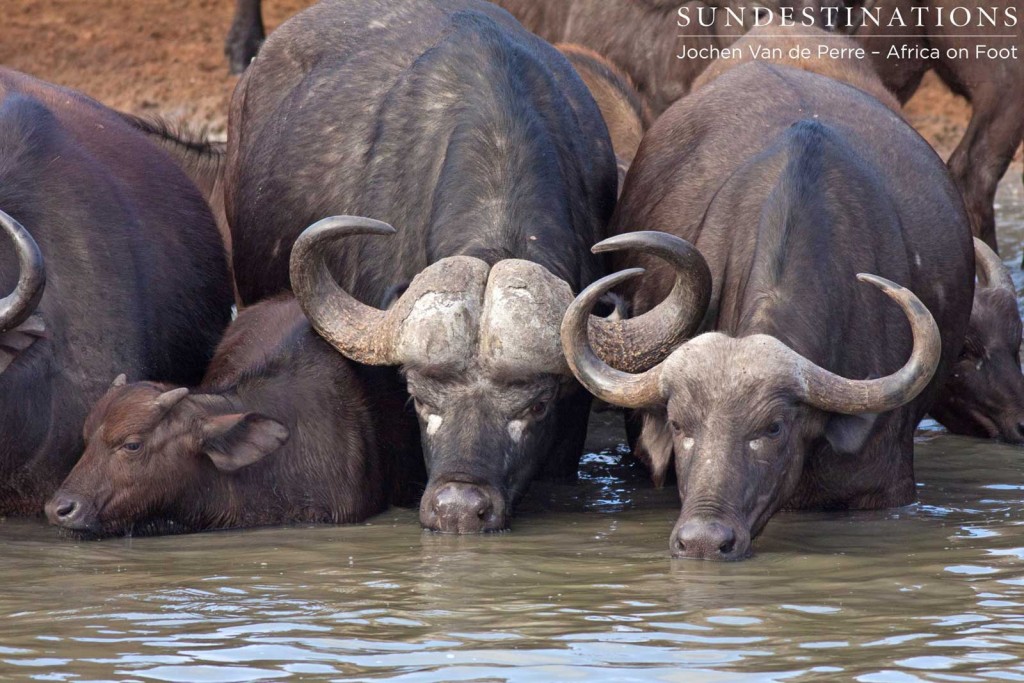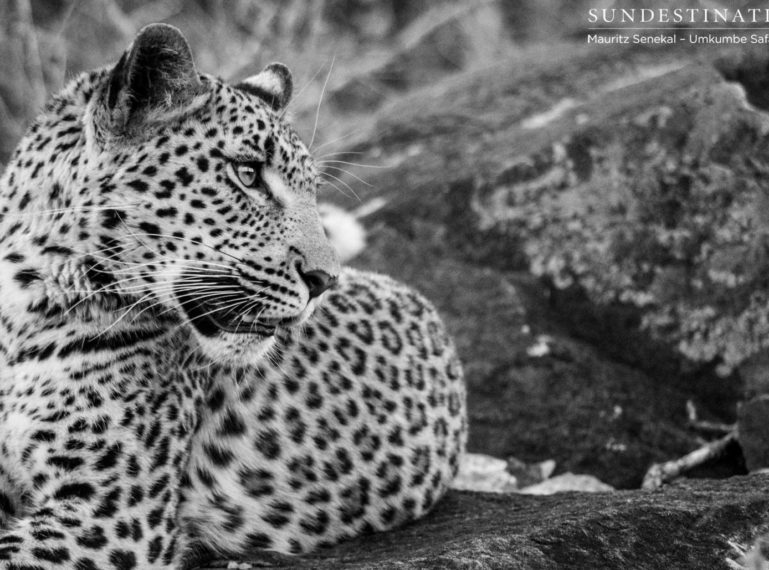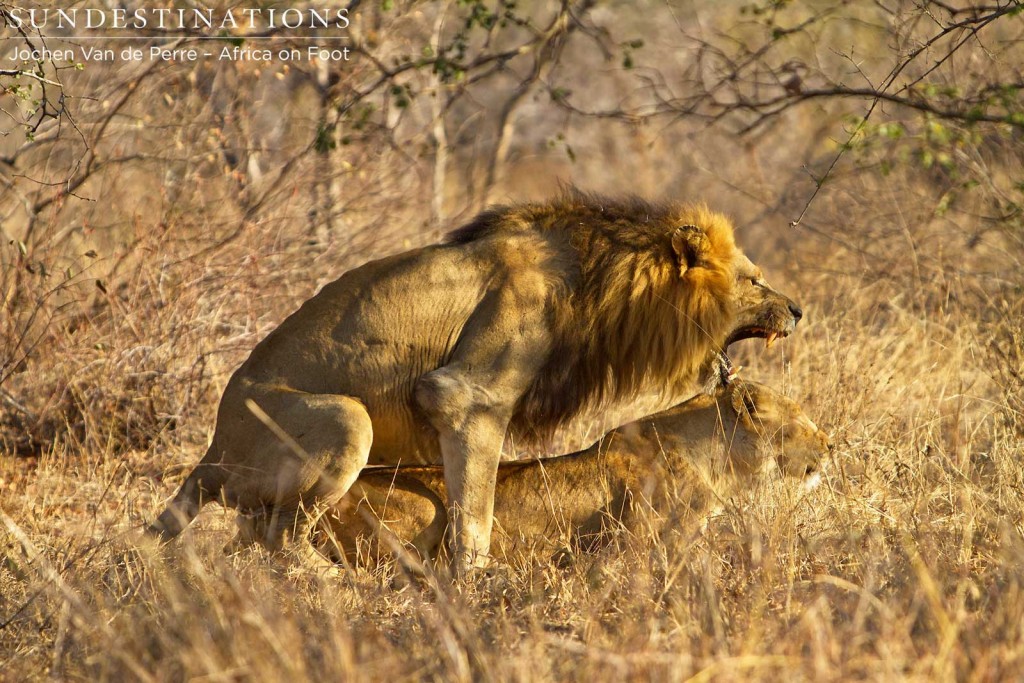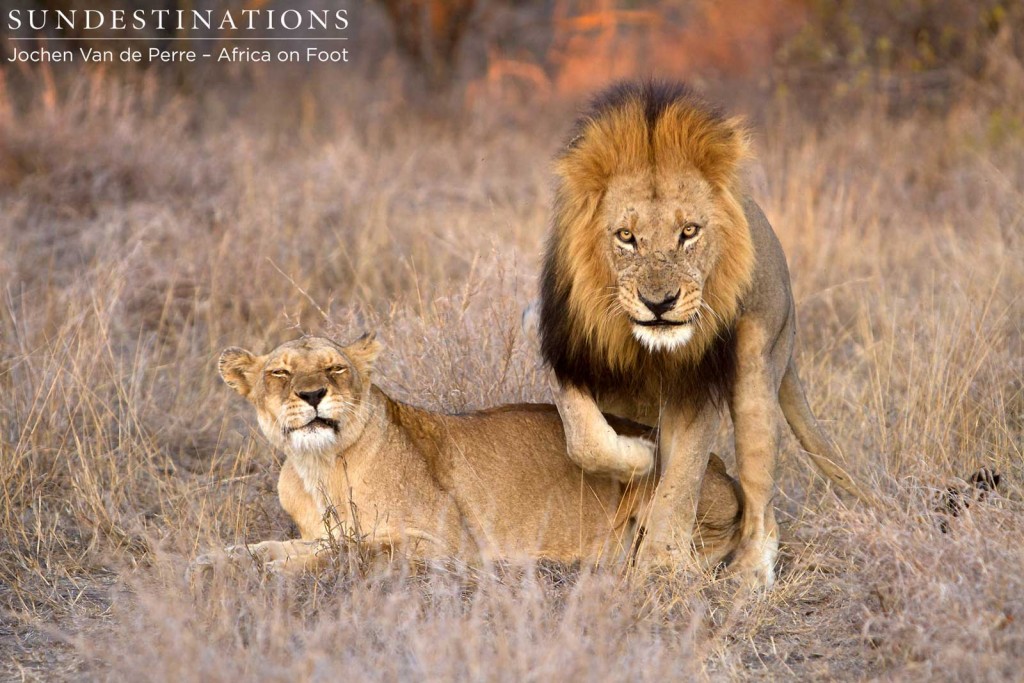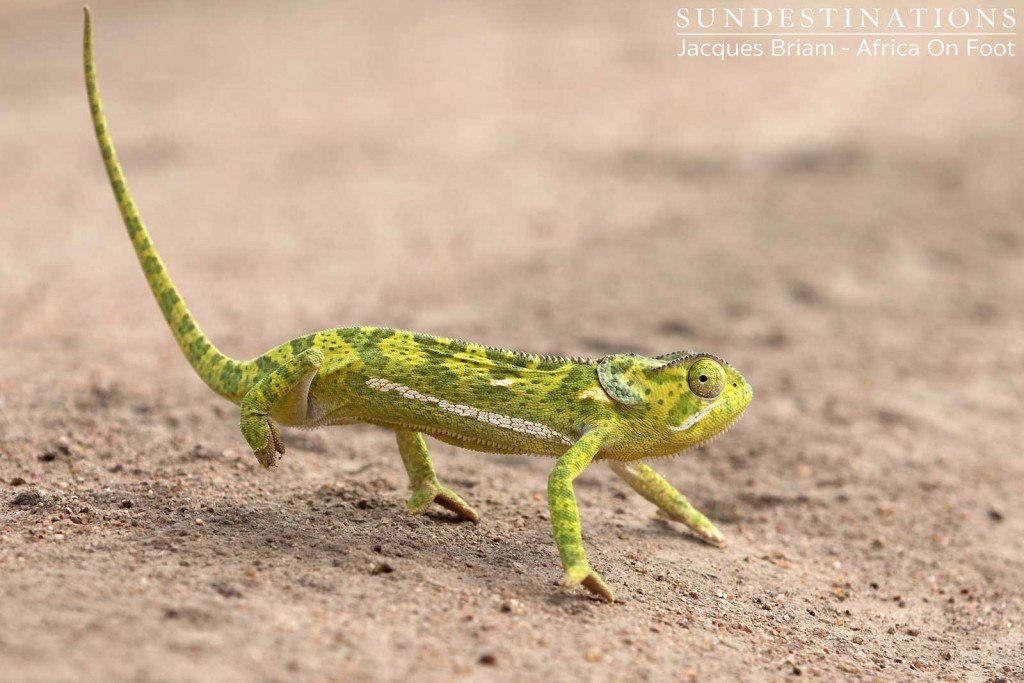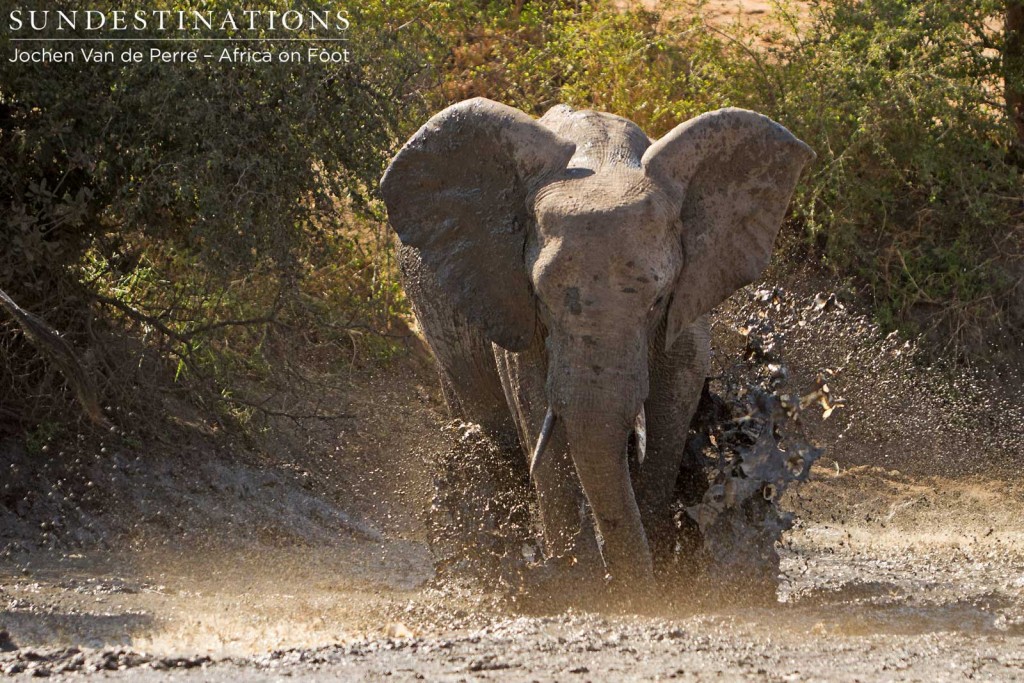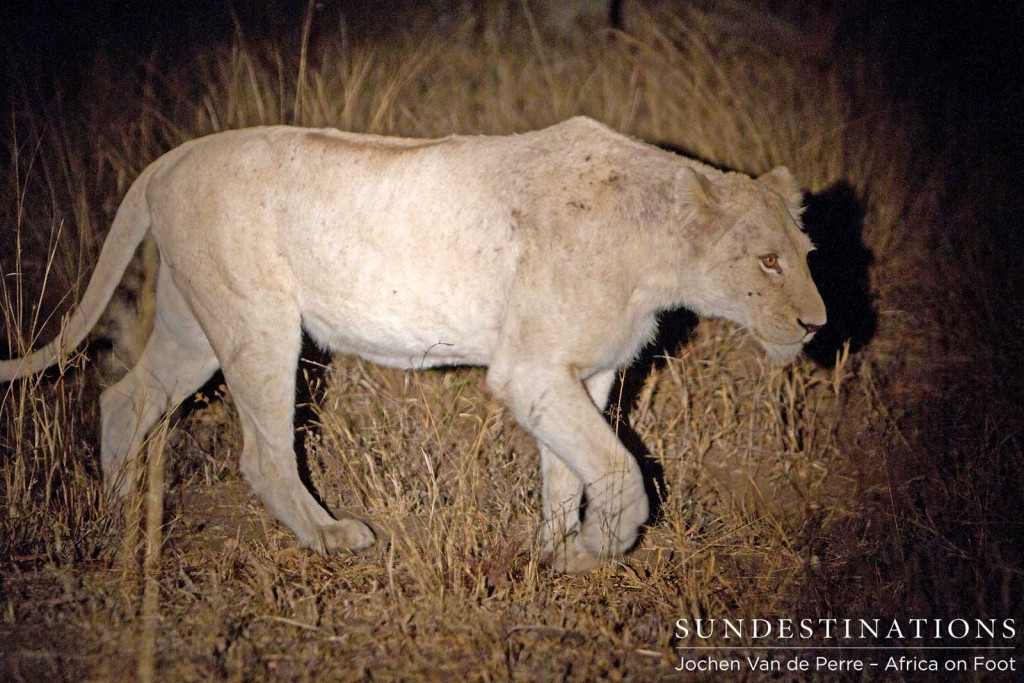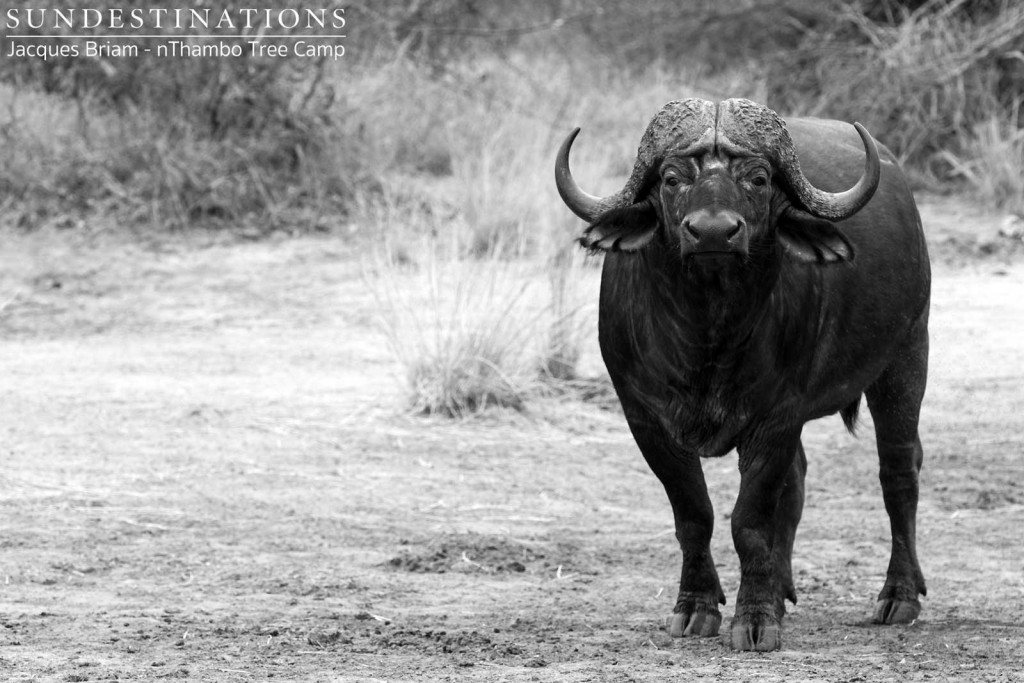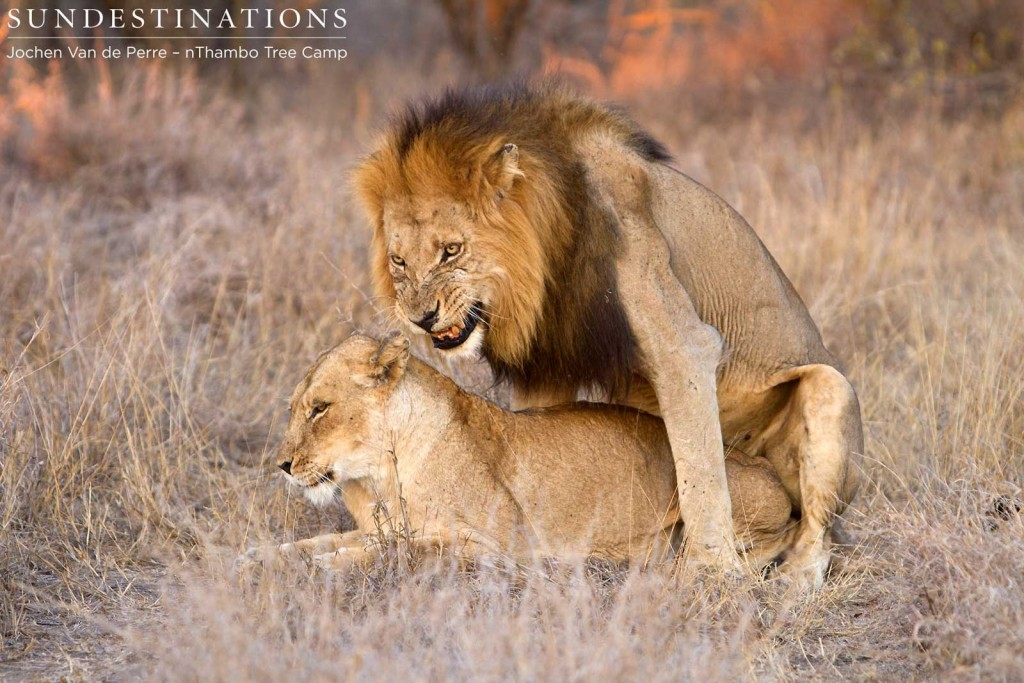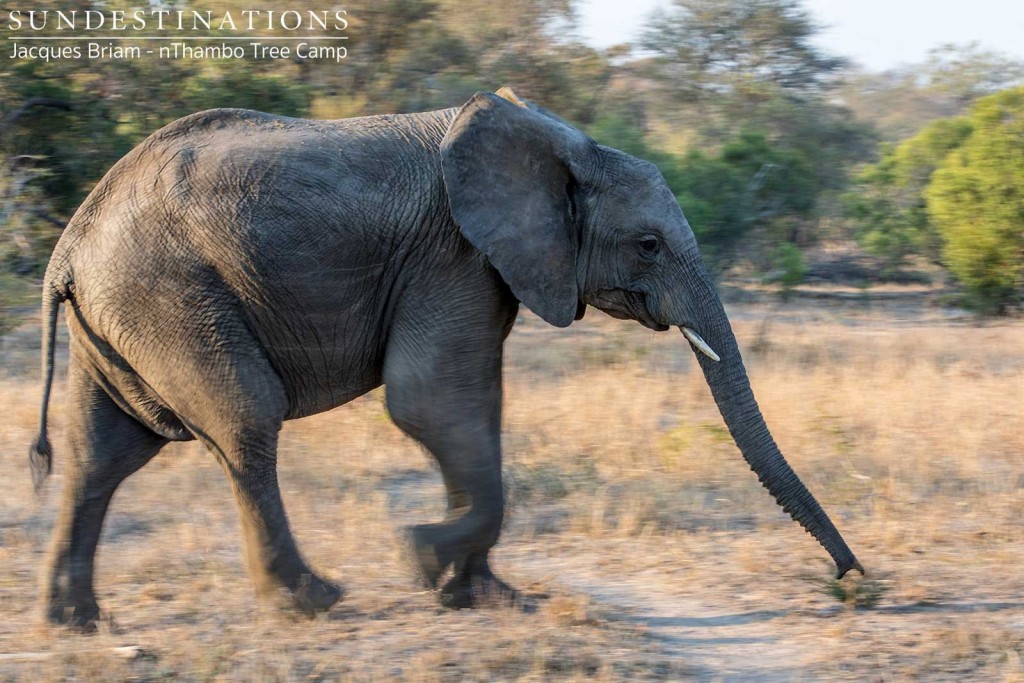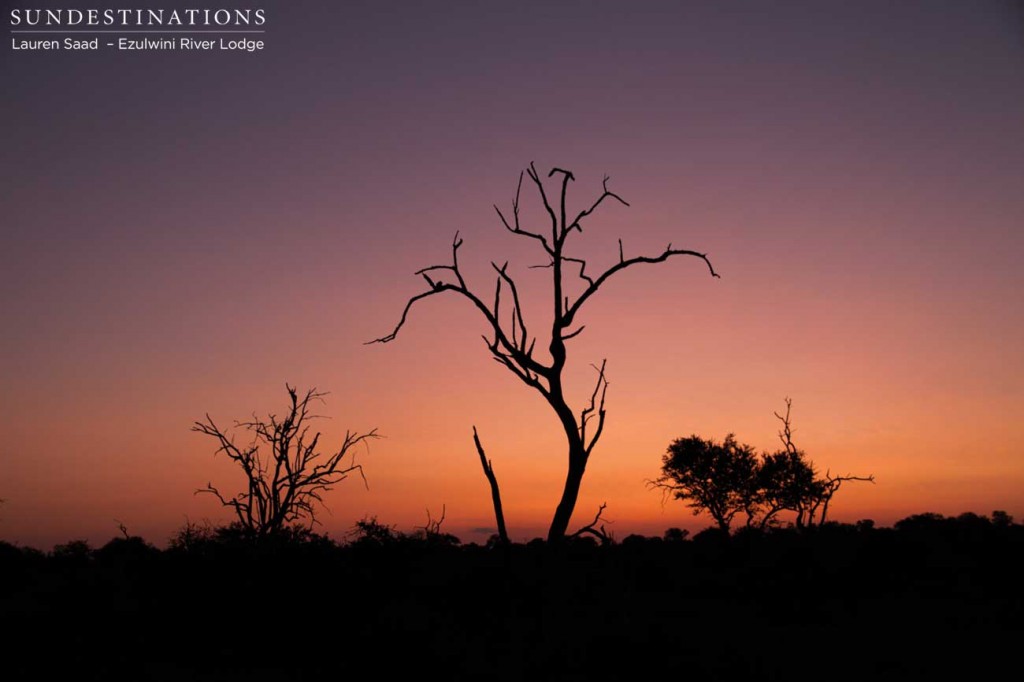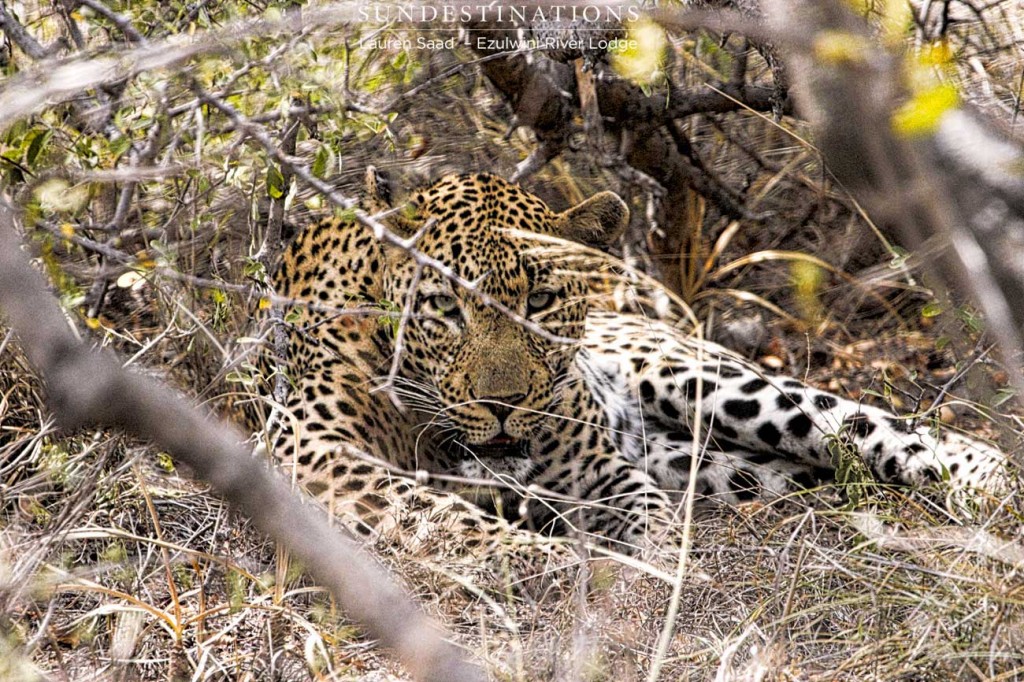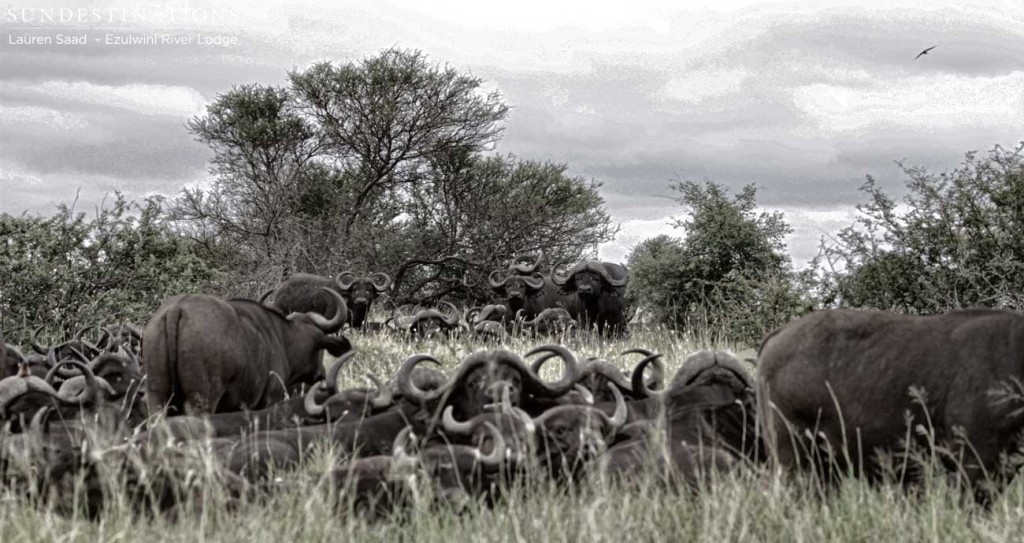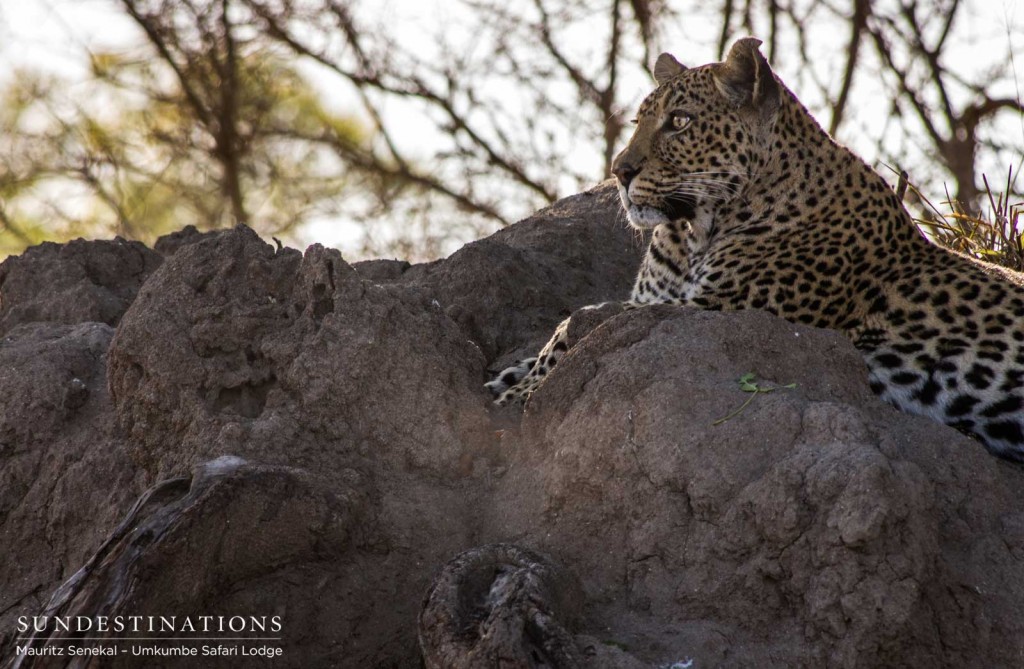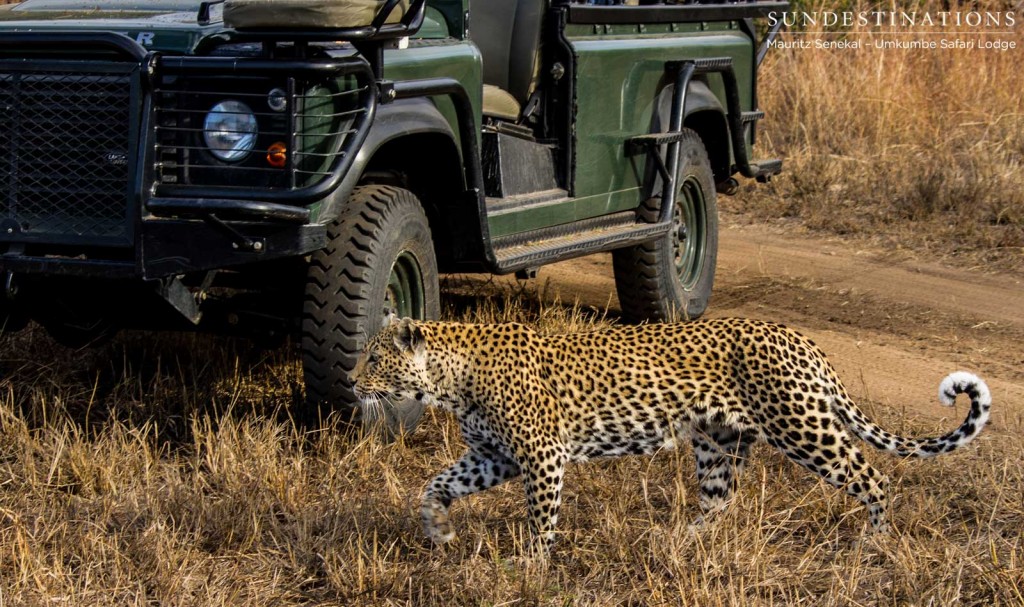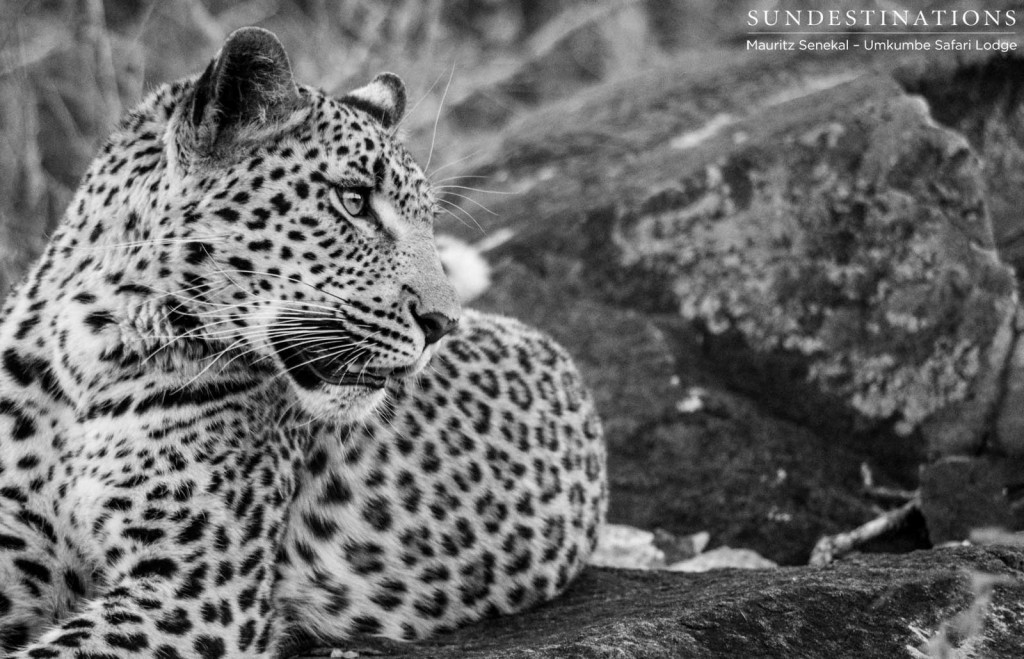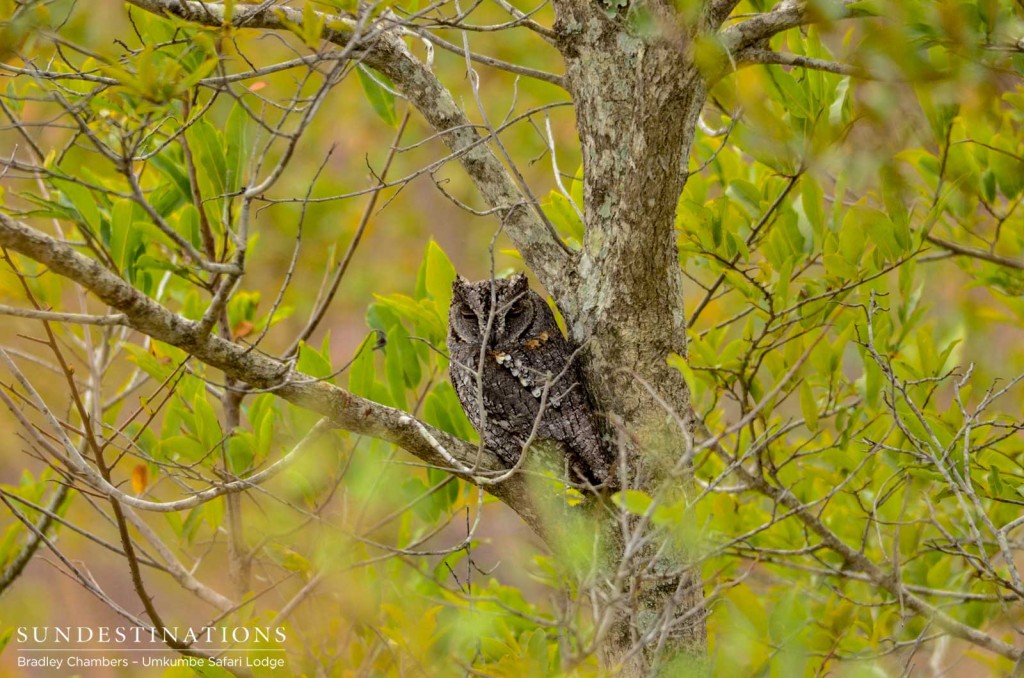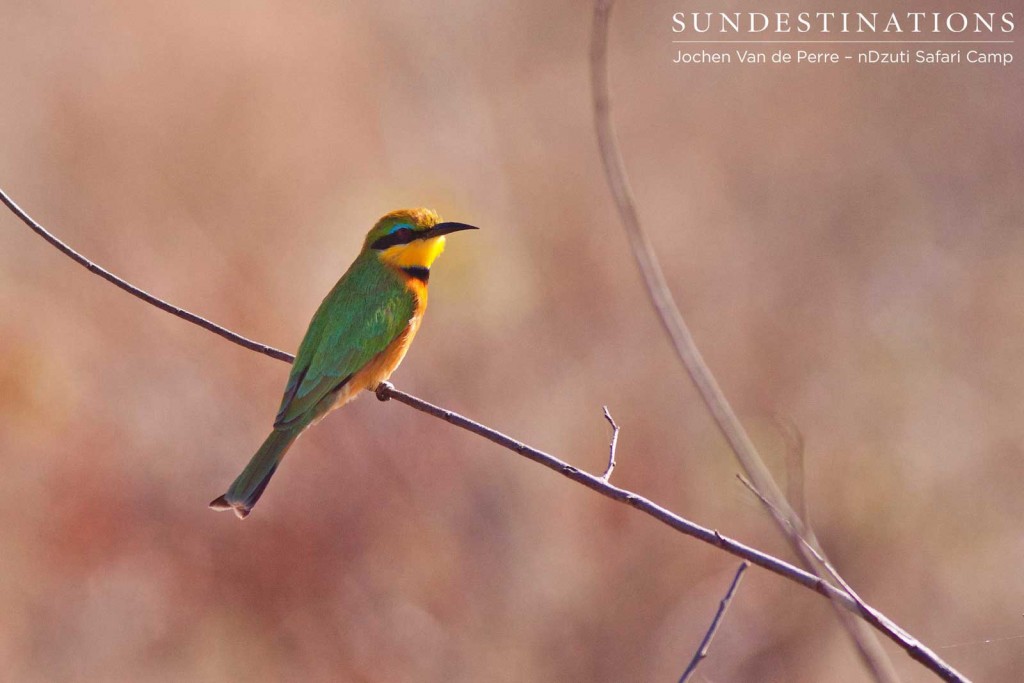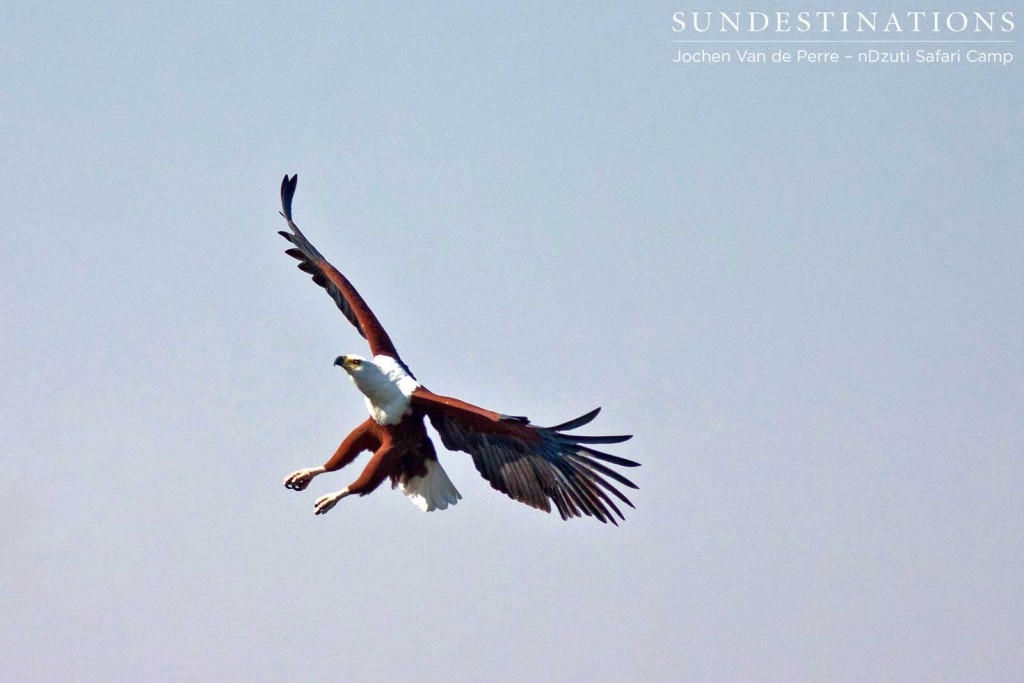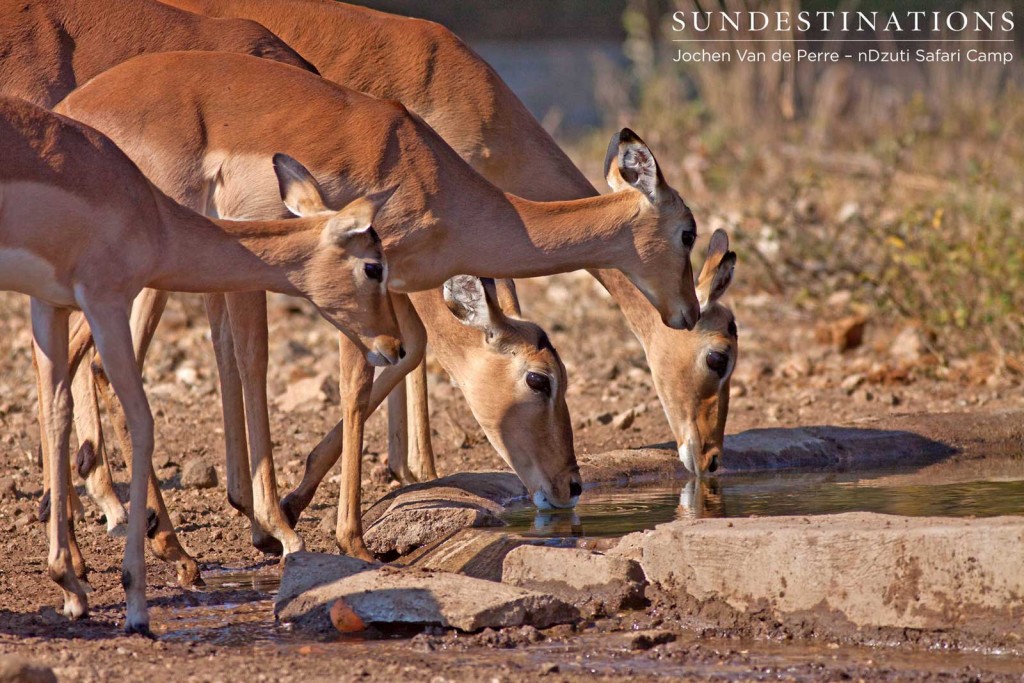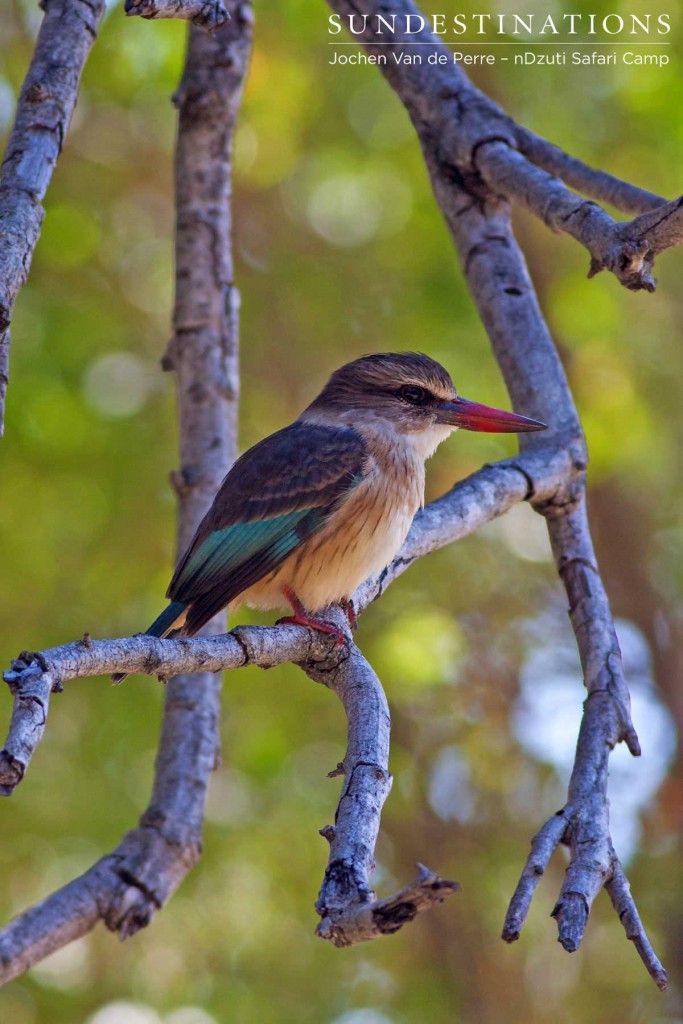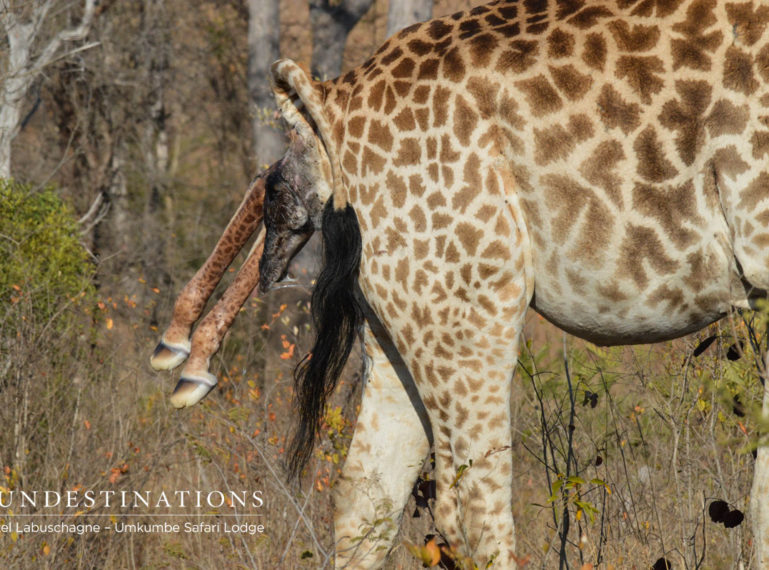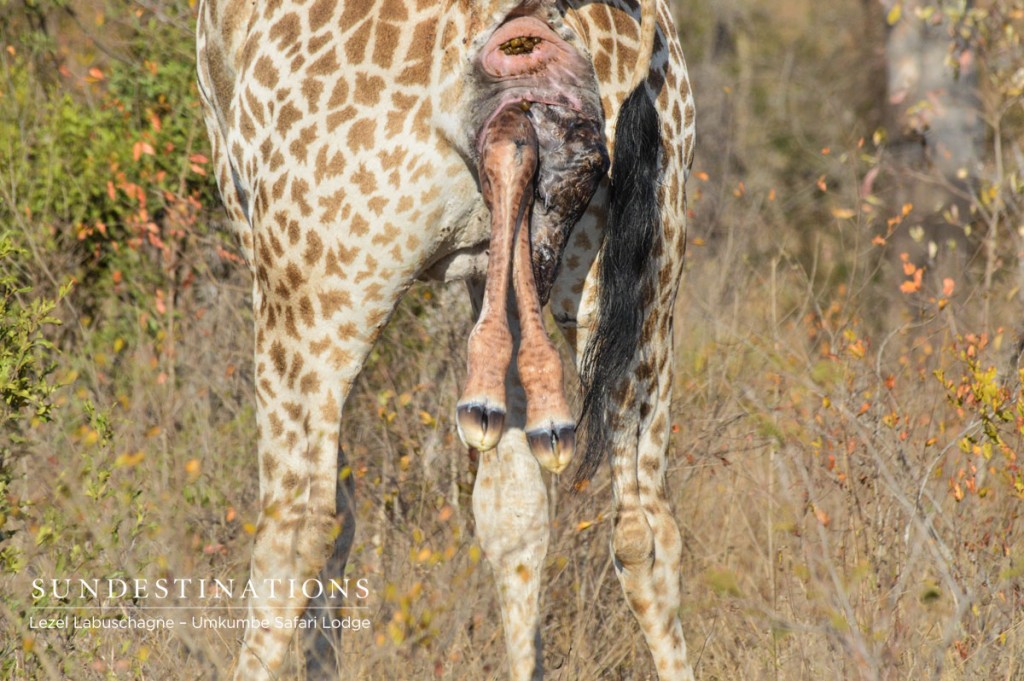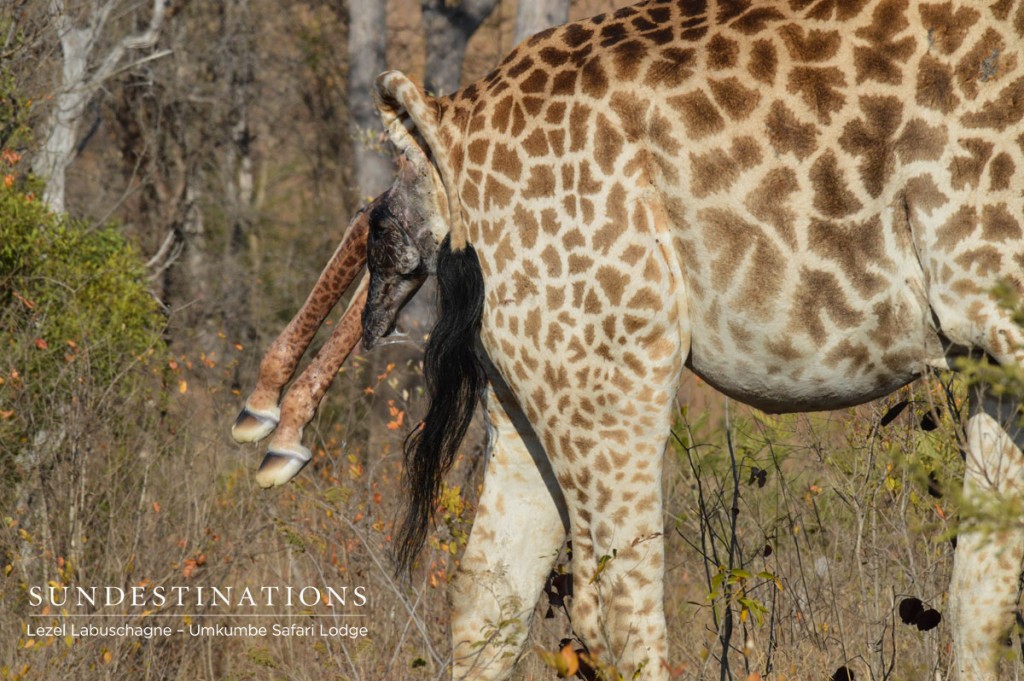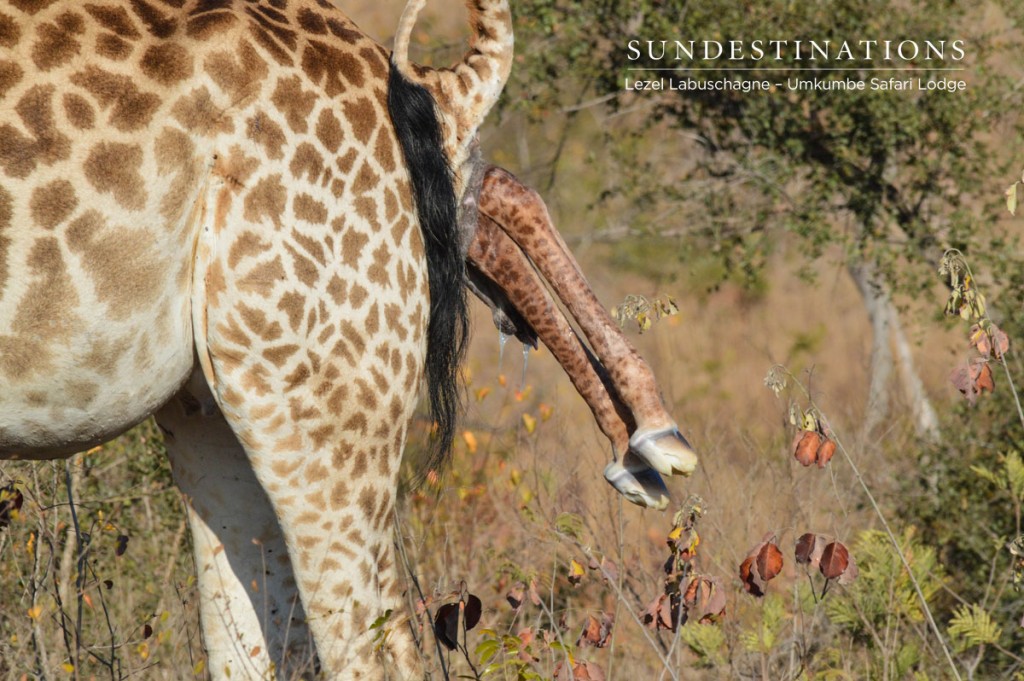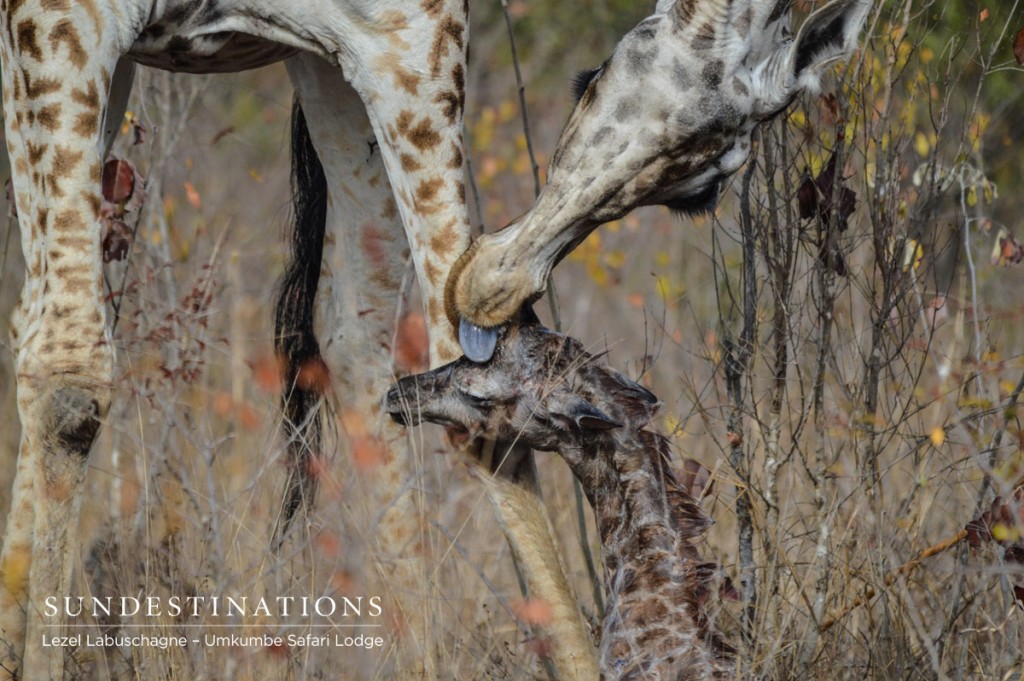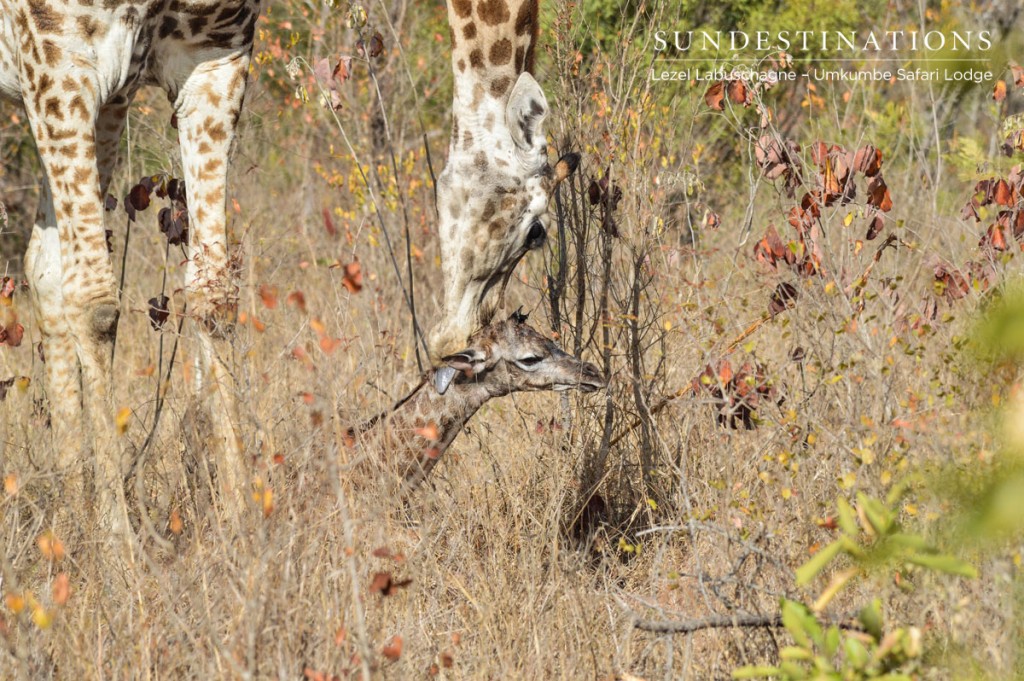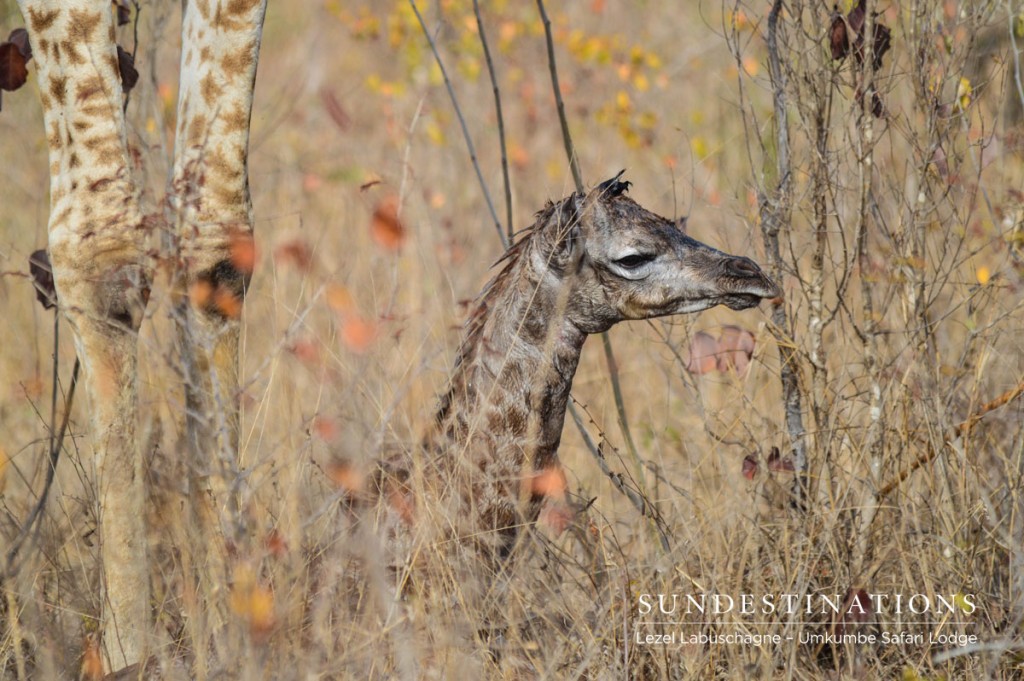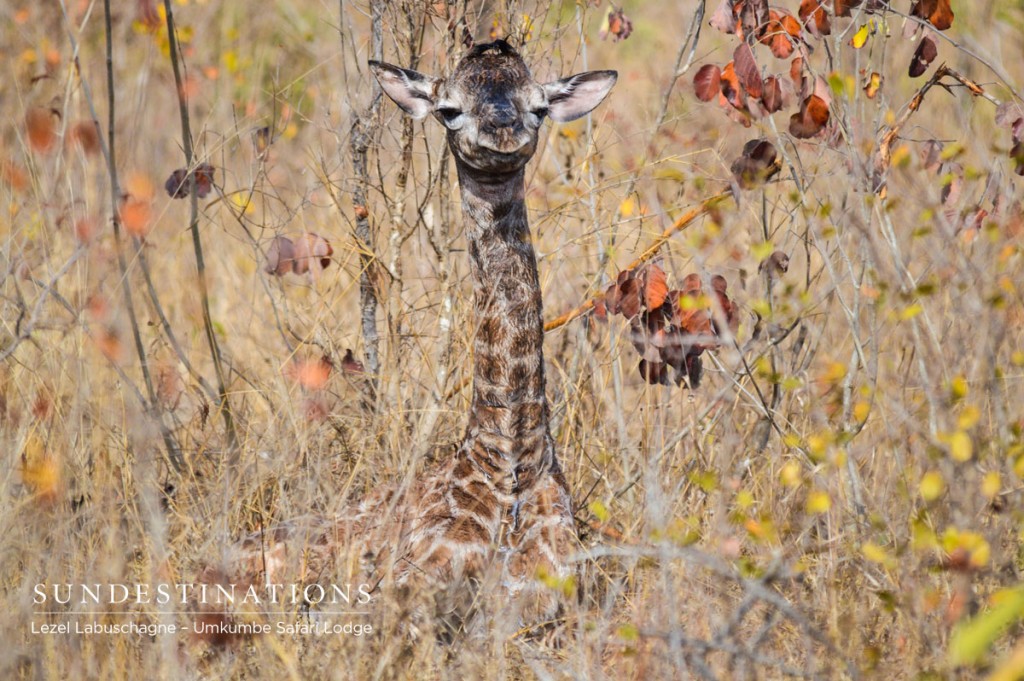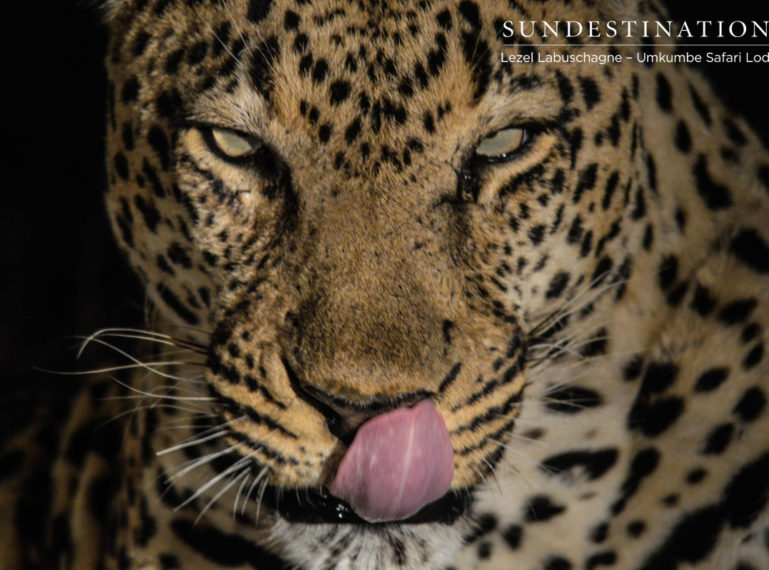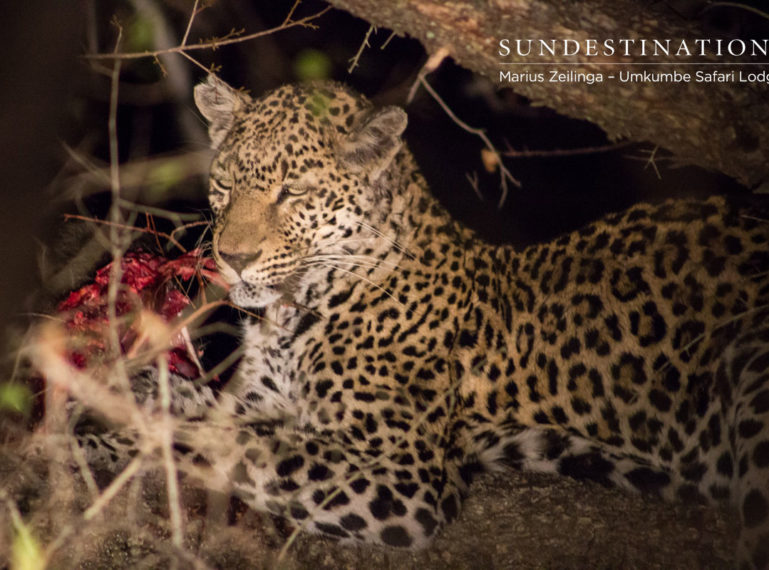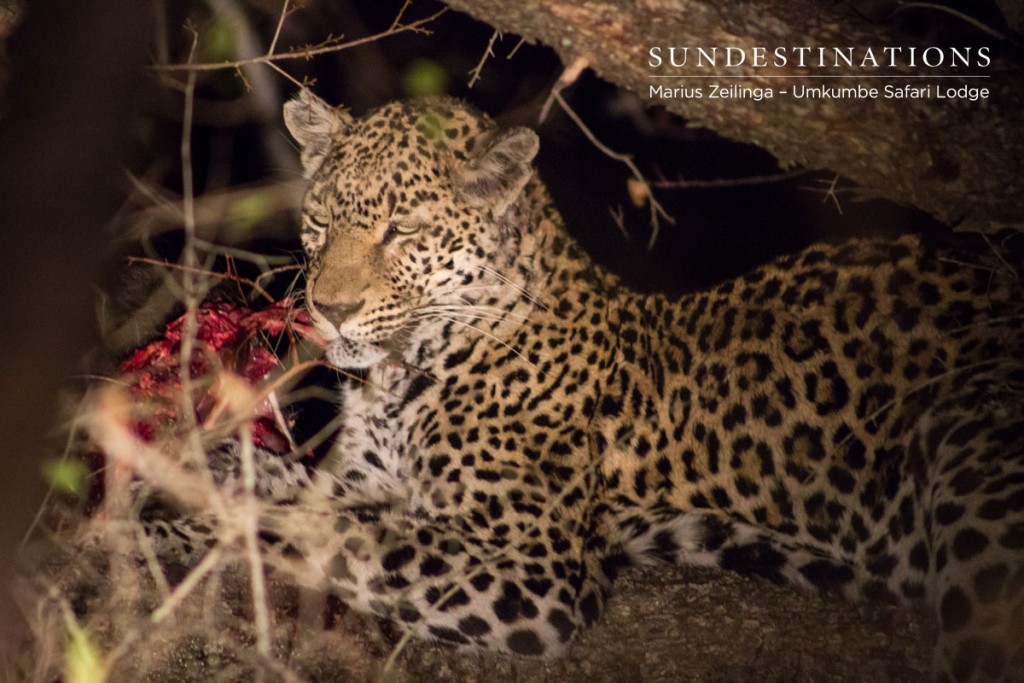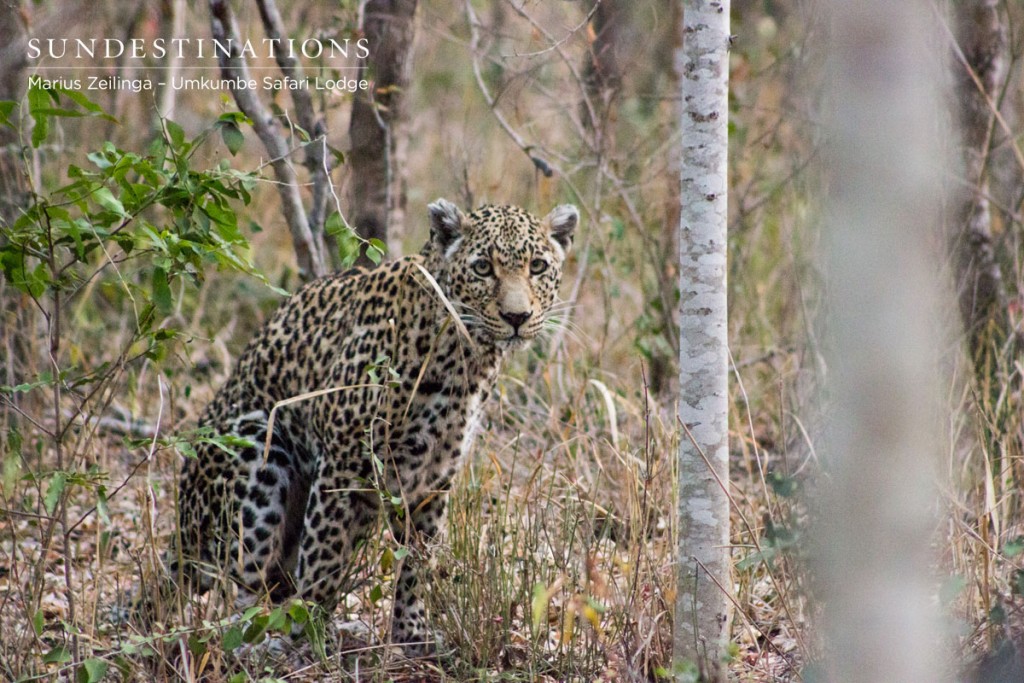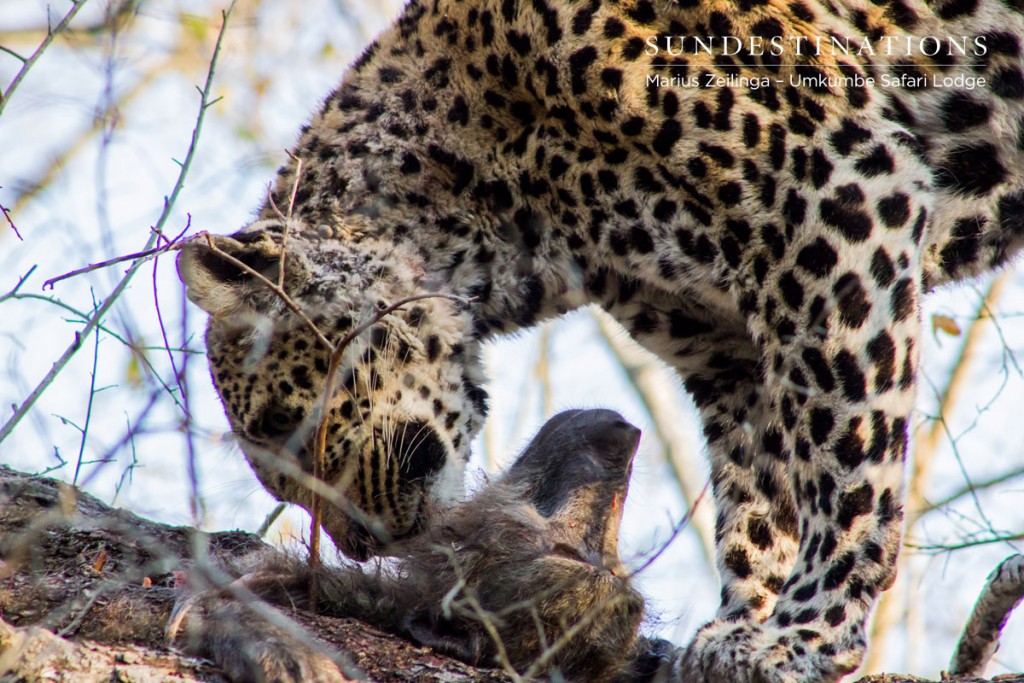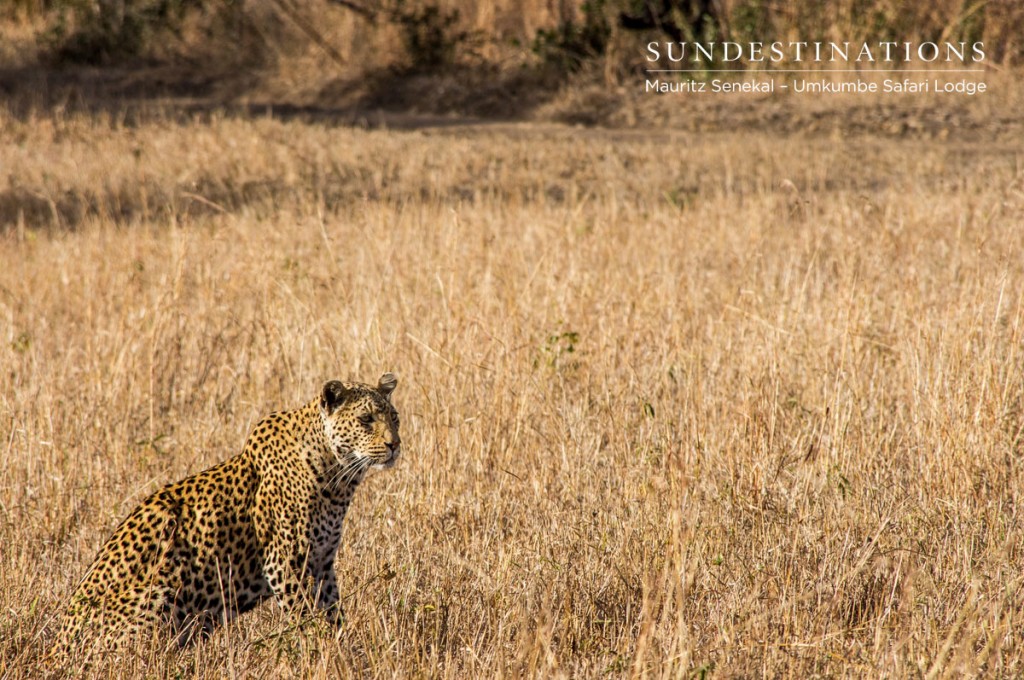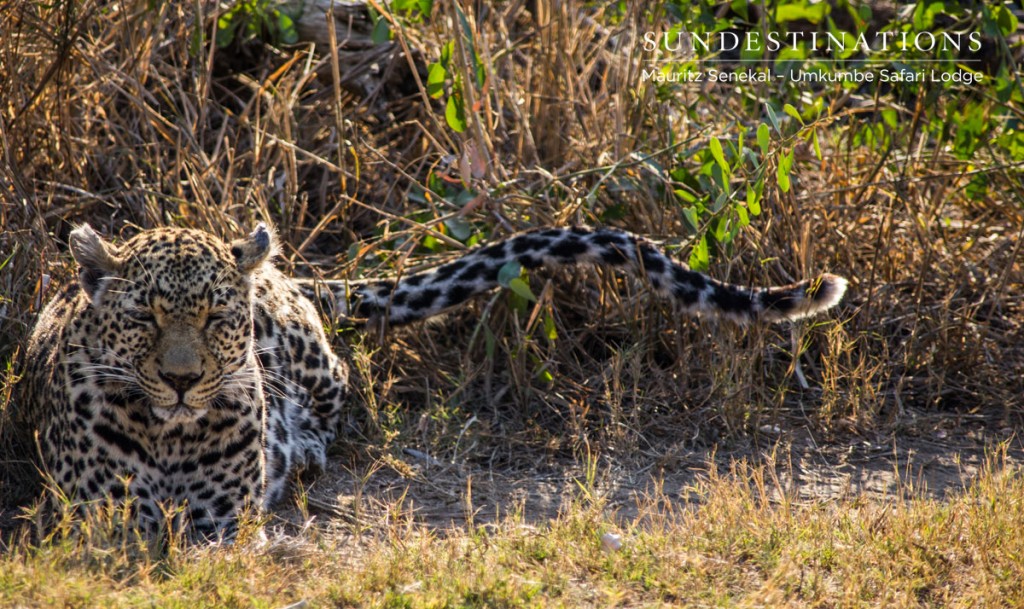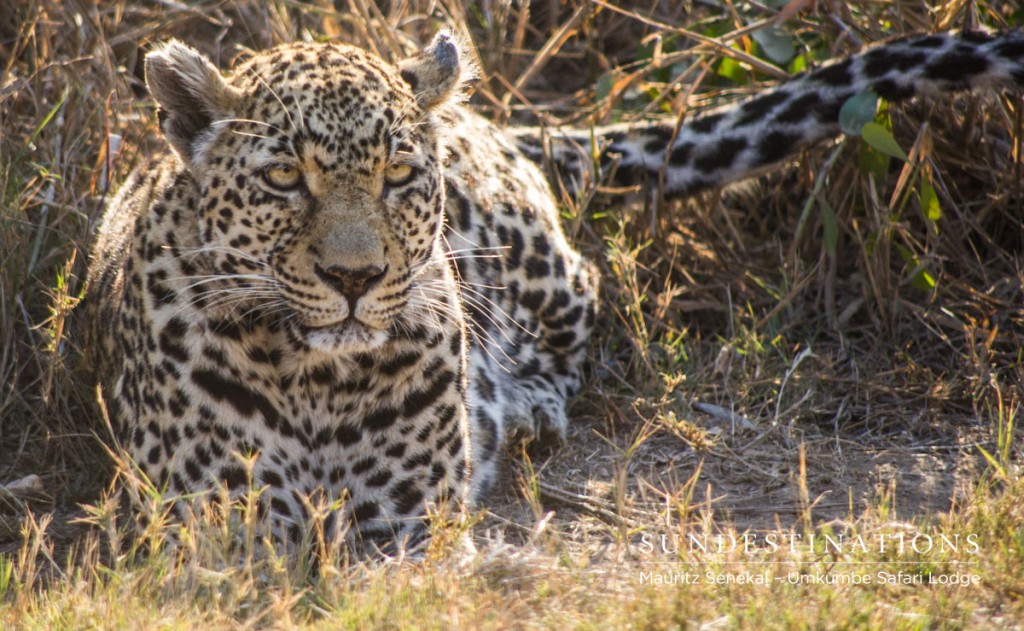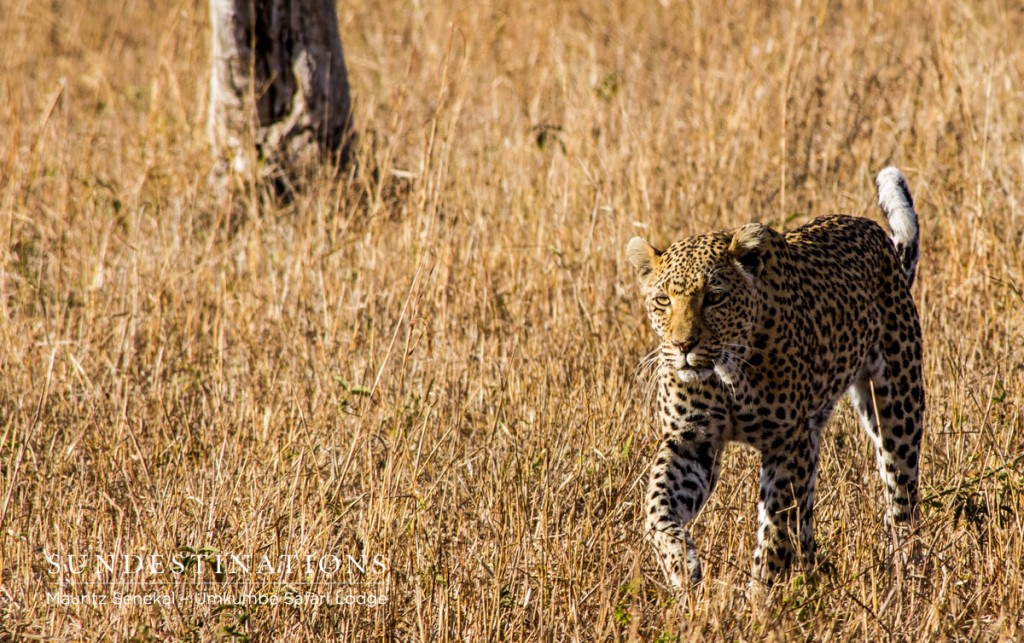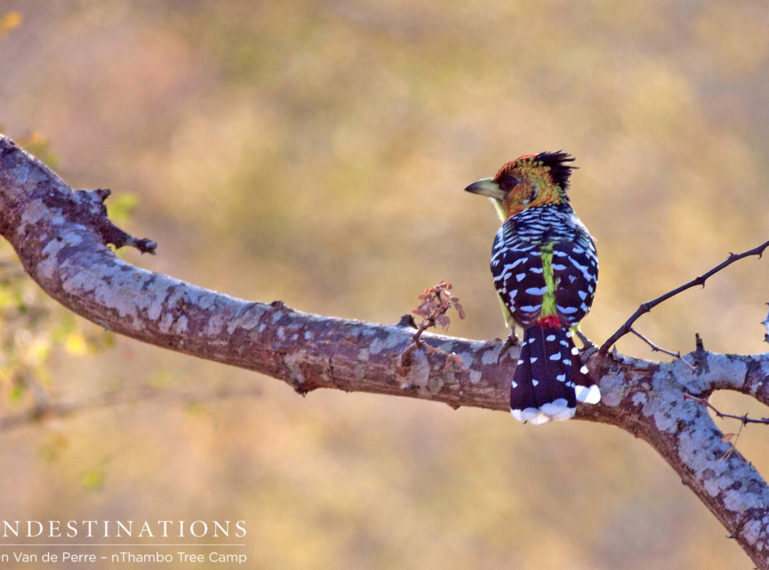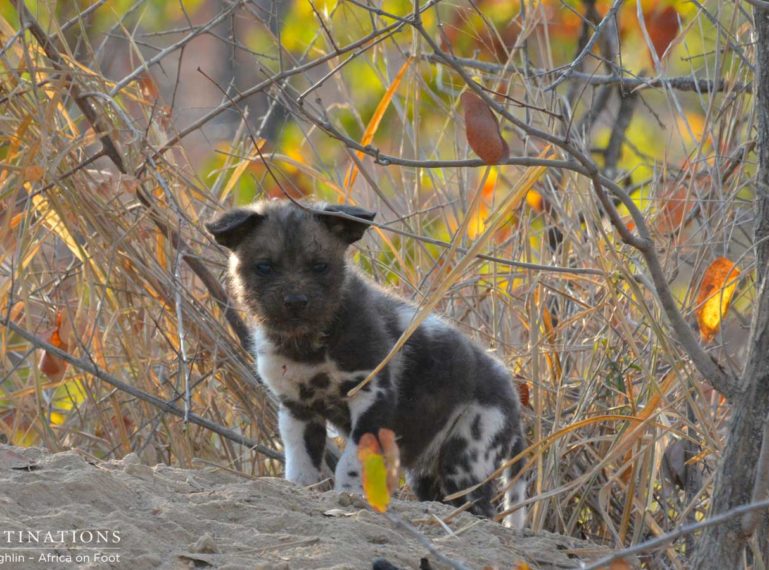
VIDEO: Wild dog pups get a meaty breakfast!
Something incredible has been reported from within the heart of the Klaserie Private Nature Reserve, and we are now considered some of the privileged few to have witnessed such an intimate act of the wild. Africa’s endangered painted dogs have settled in a den near Africa on Foot and nThambo Tree Camp, and the alpha female has given birth to 2 pups who we have been able to see exploring the den site over the last week or so. Yesterday, we were treated to an even more intimate look at the life of these highly endangered predators when 3 adult dogs returned to the den and were welcomed by a singsong of the twittering and whistling as the expectant pups called for food. Sure enough, the dogs regurgitated whole chunks of meat and fed the ‘babysitter’, the alpha female, and the 2 young pups.
When ranger-turned-photographer Kevin MacLaughlin arrived at the den (at a designated time and from a specific distance so as not to disturb the den site), one adult dog was the acting ‘watch dog’ and the others were nowhere to be seen. Knowing that wild dogs are daylight hunters, preferring early mornings and evenings, Kevin set up his equipment and hoped that he might be in time to see the other dogs return from a hunt. At this stage, the pups are too young to leave the den, and they will stay put for the first 2.5 months of their lives. During this time, various members of the pack will take turns to stay back and guard the den while the others go off hunting, and this time it was lucky there was a babysitter on duty! Kevin explains what he saw:
We must have been waiting for about 20 minutes when we spotted a hyena sniffing the ground about 80-100m from the den, but shortly after it bolted from the area as the rest of the wild dog pack came back and gave chase. Once the hyena was far away, the dogs approached the den, and then we saw the alpha female (mom) and the 2 pups come out of the burrow to feed.
The pups are estimated to be about a month old and are still reliant on their mother for milk, but even at this tender age, wild dogs are eating small amounts of meat, which is regurgitated from adult dogs. At about 2.5 months old the pups will leave the den and tag along behind the pack as they hunt, learning the ropes and getting a feel for how these predators achieve such a high hunting success rate.
We are so lucky to have glanced this incredible world of the African wild dog. The second most endangered predator in Africa, there are only an estimated 4000 individuals remaining in the wild. They are constantly on the move and the only time a pack stays put in an area is when they are denning, which is for 3 months between May and July. Kevin describes just how memorable this sighting is for him:
I’ve often seen documentaries of what happens at a wild dog den, but I’ve never seen it in real life. It’s incredible to watch the dynamics within the pack. Seeing how they all work together to ensure the survival of their pups, and ultimately their pack, is really something special. This has to be right up there with my most memorable memories out in the bush.
How thankful we are that they chose this spot in the Klaserie, and that we can implement a secure and unobtrusive visiting roster so as not to disturb this precious nest. We hope that our guests at Africa on Foot and nThambo Tree Camp will be introduced to these cubs very soon. Watch this space for updates!
